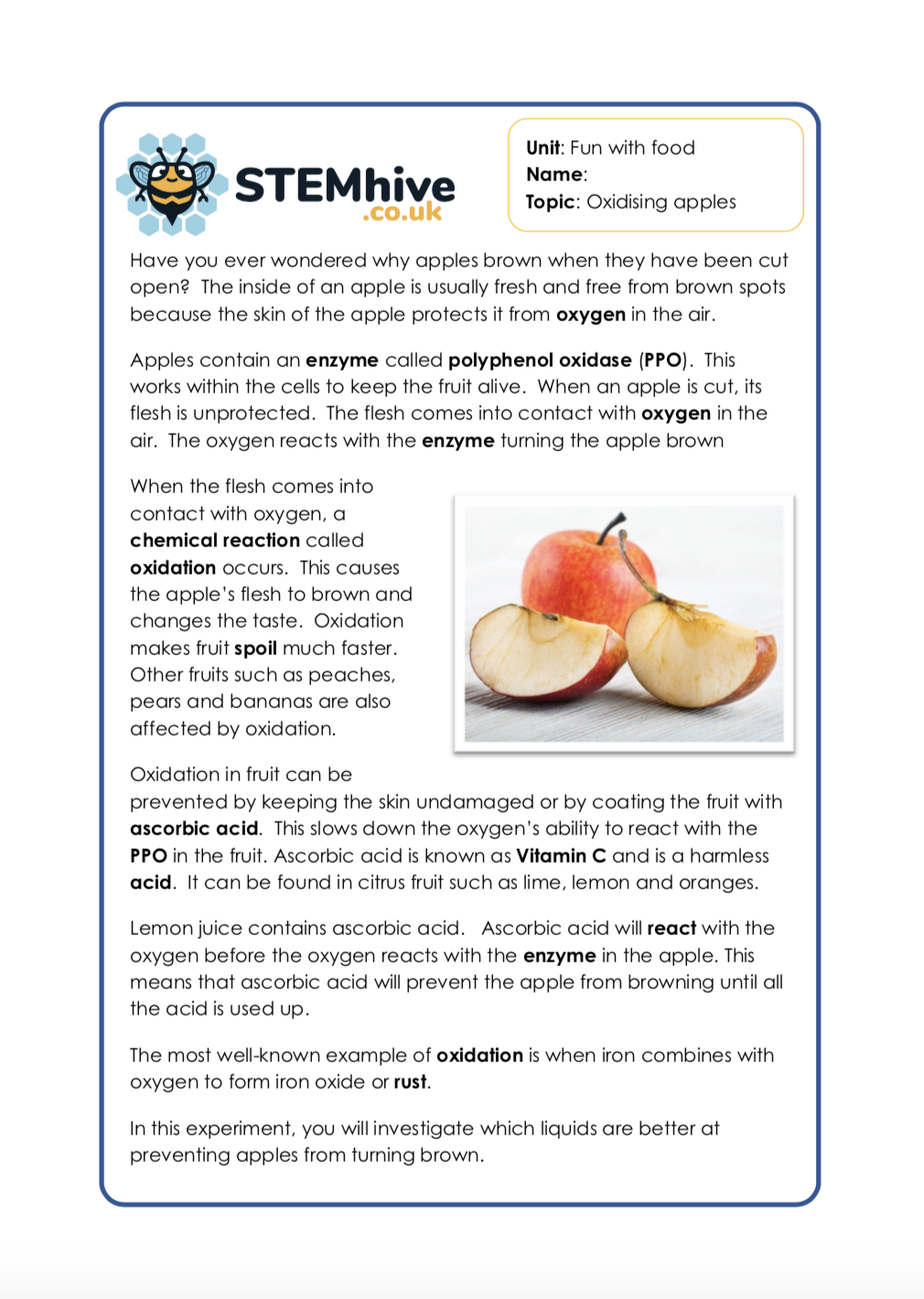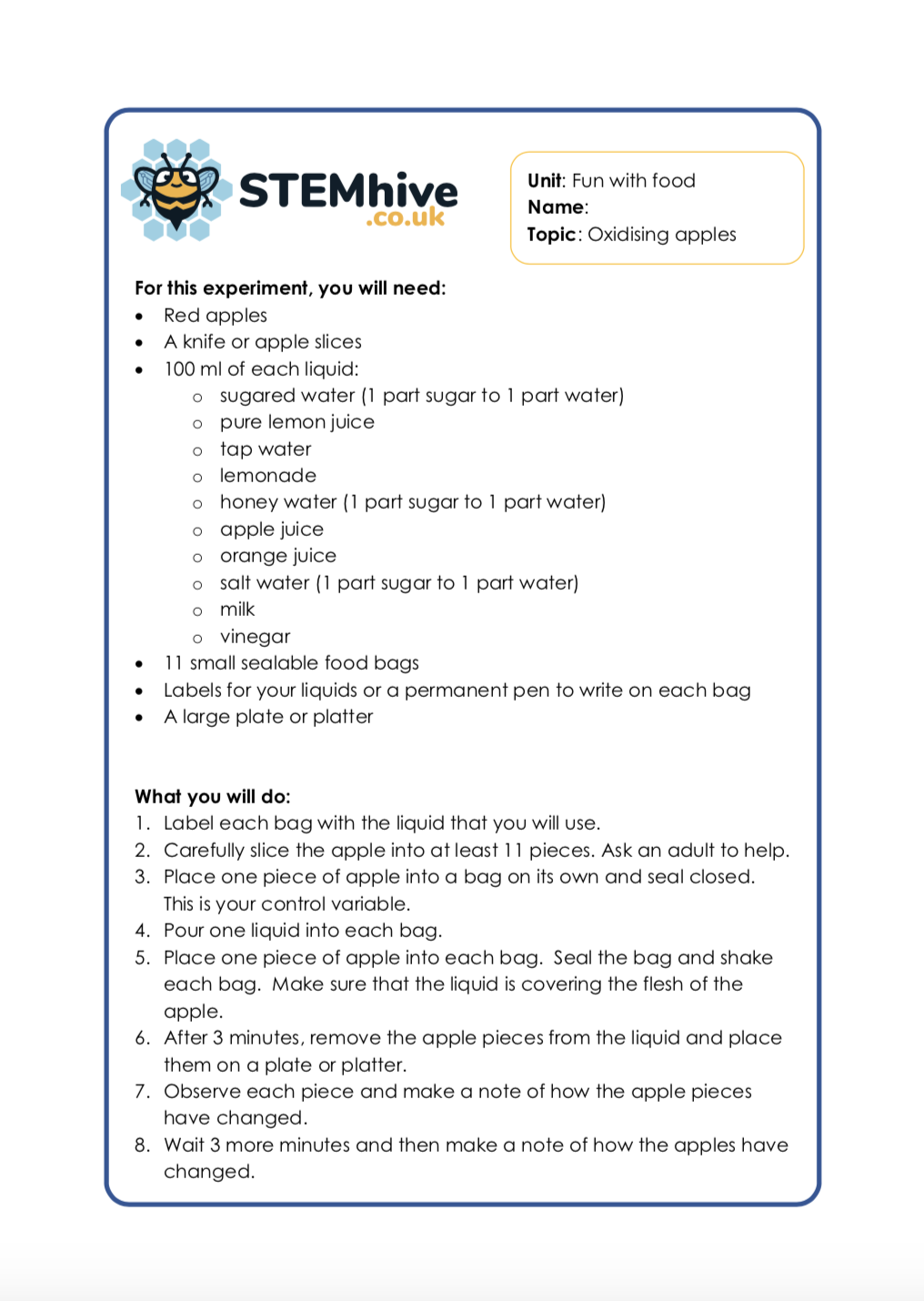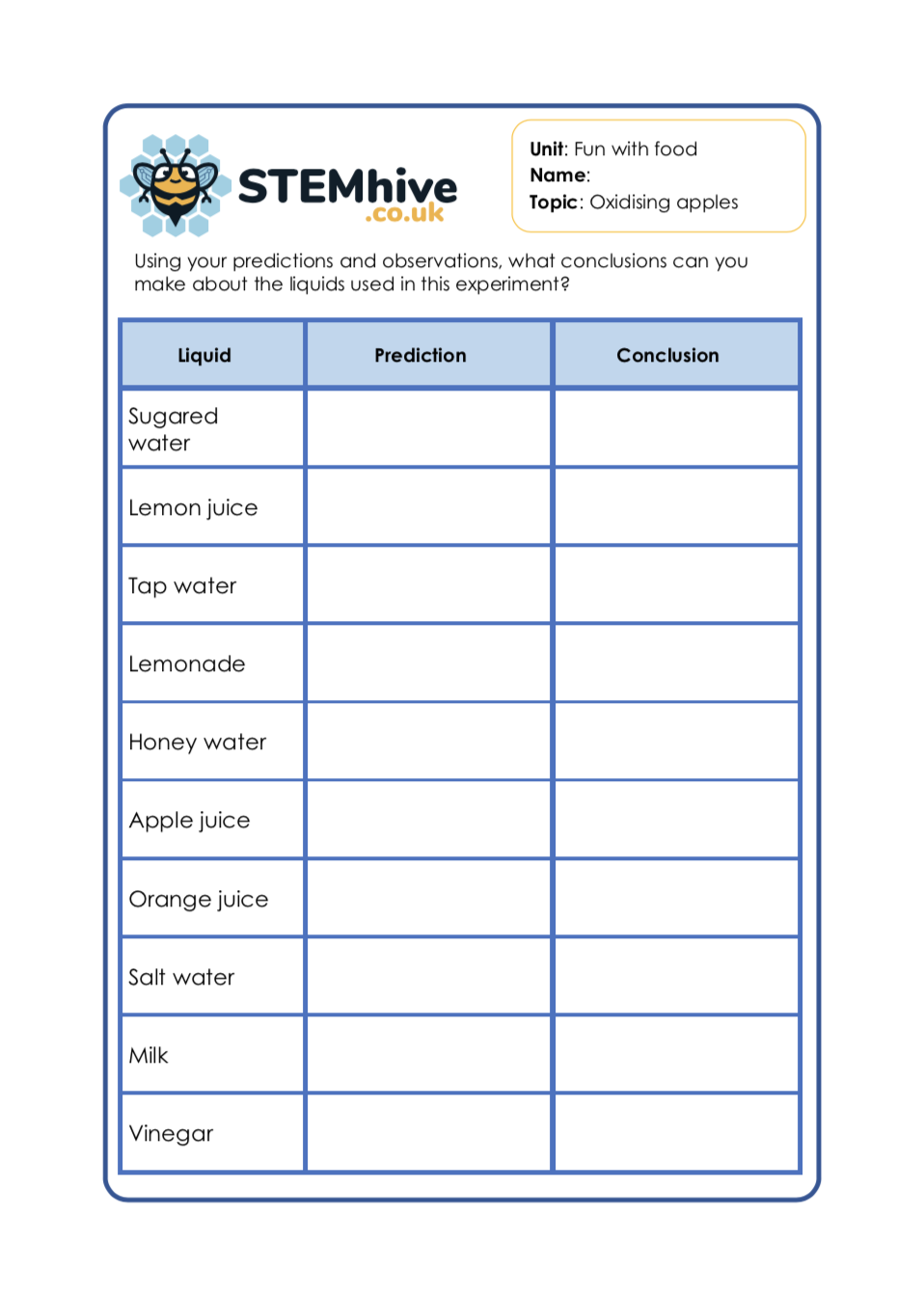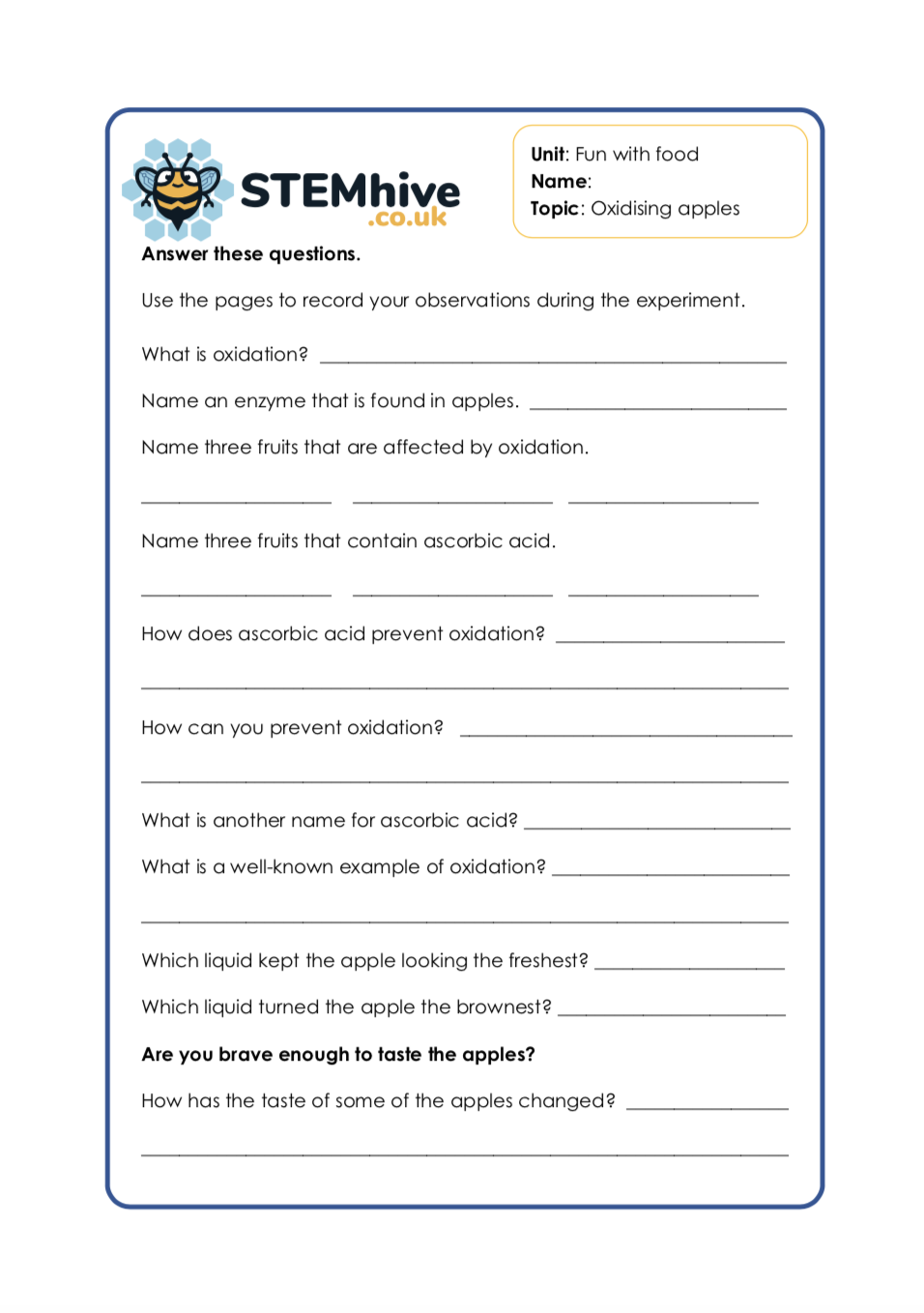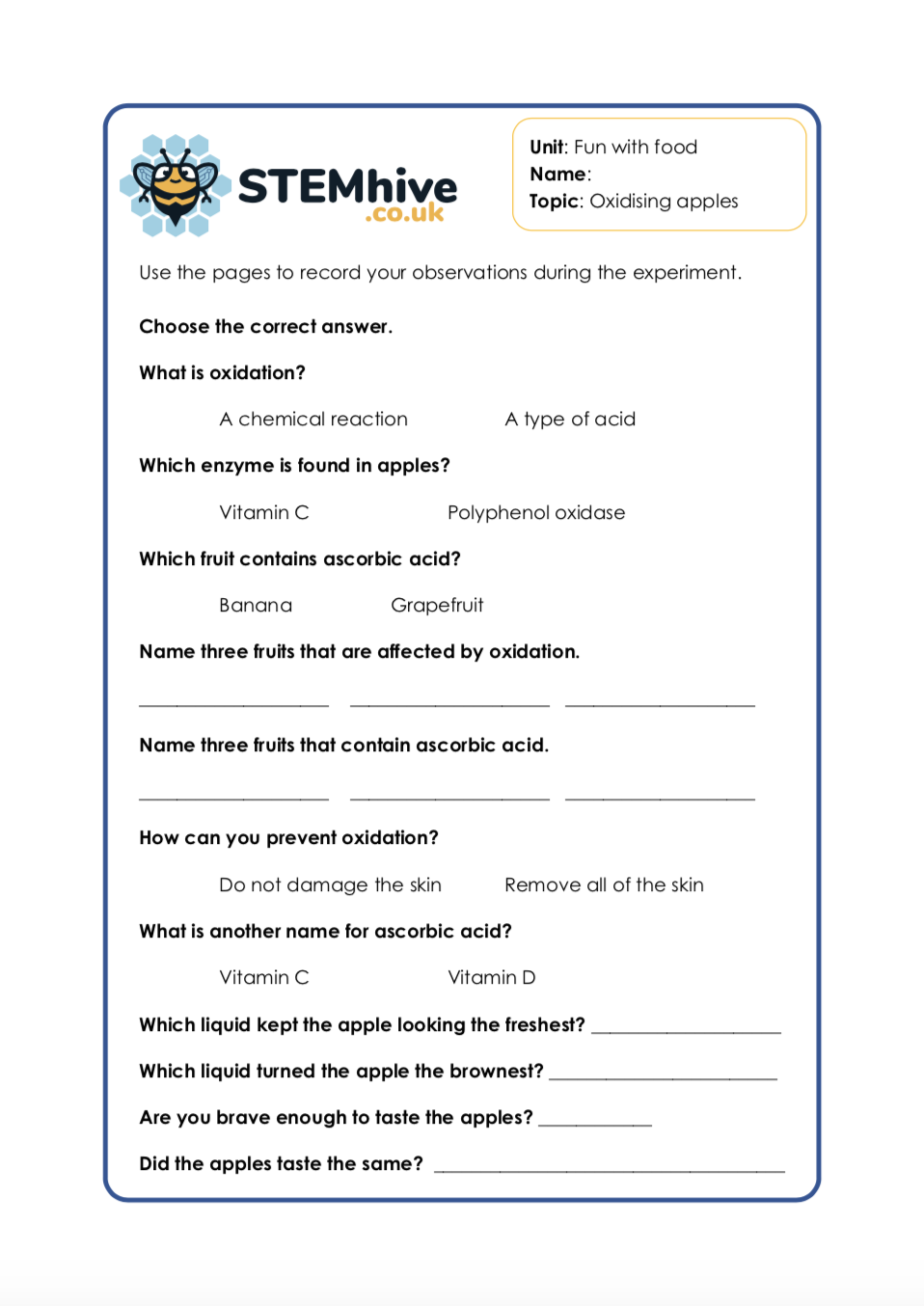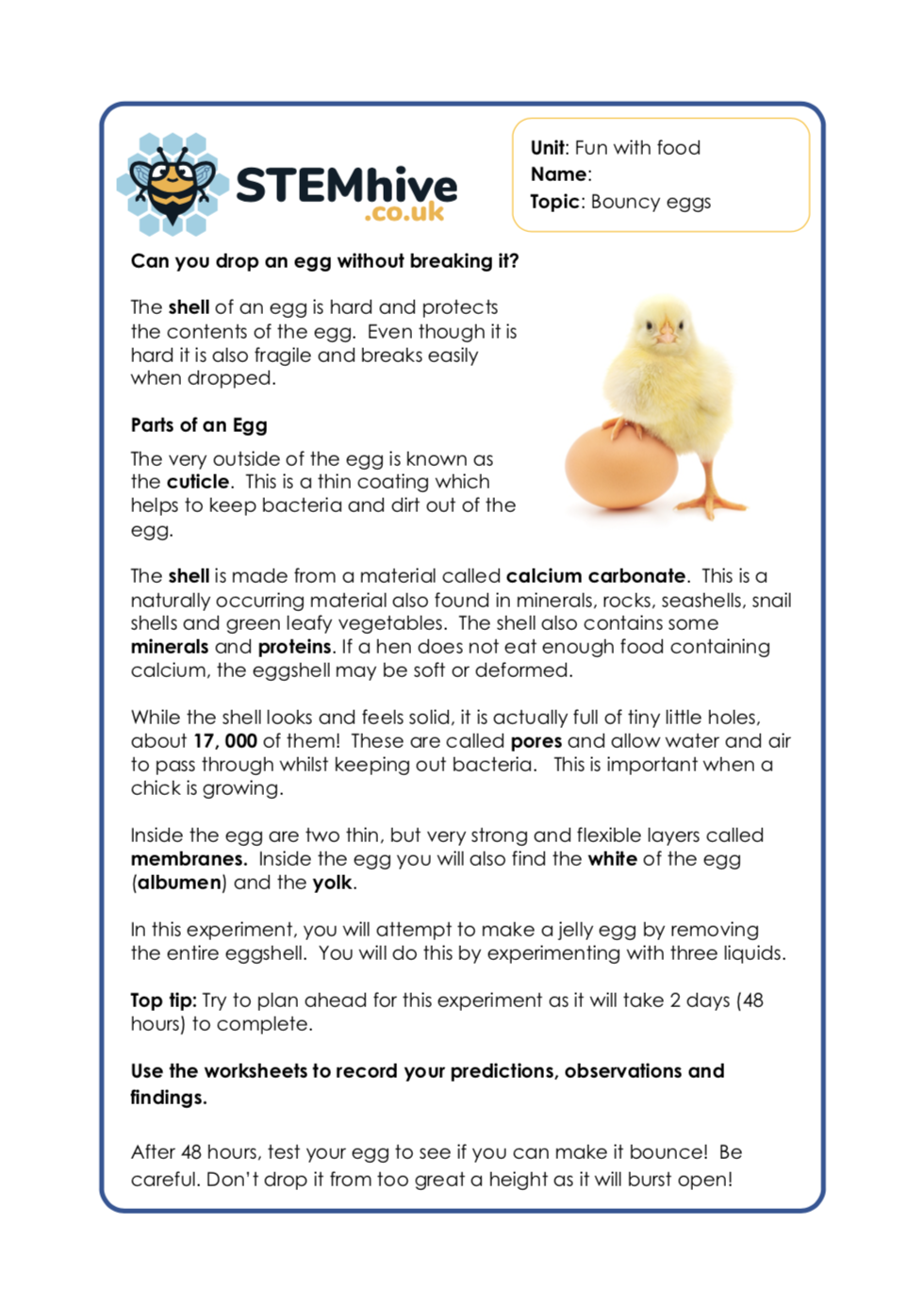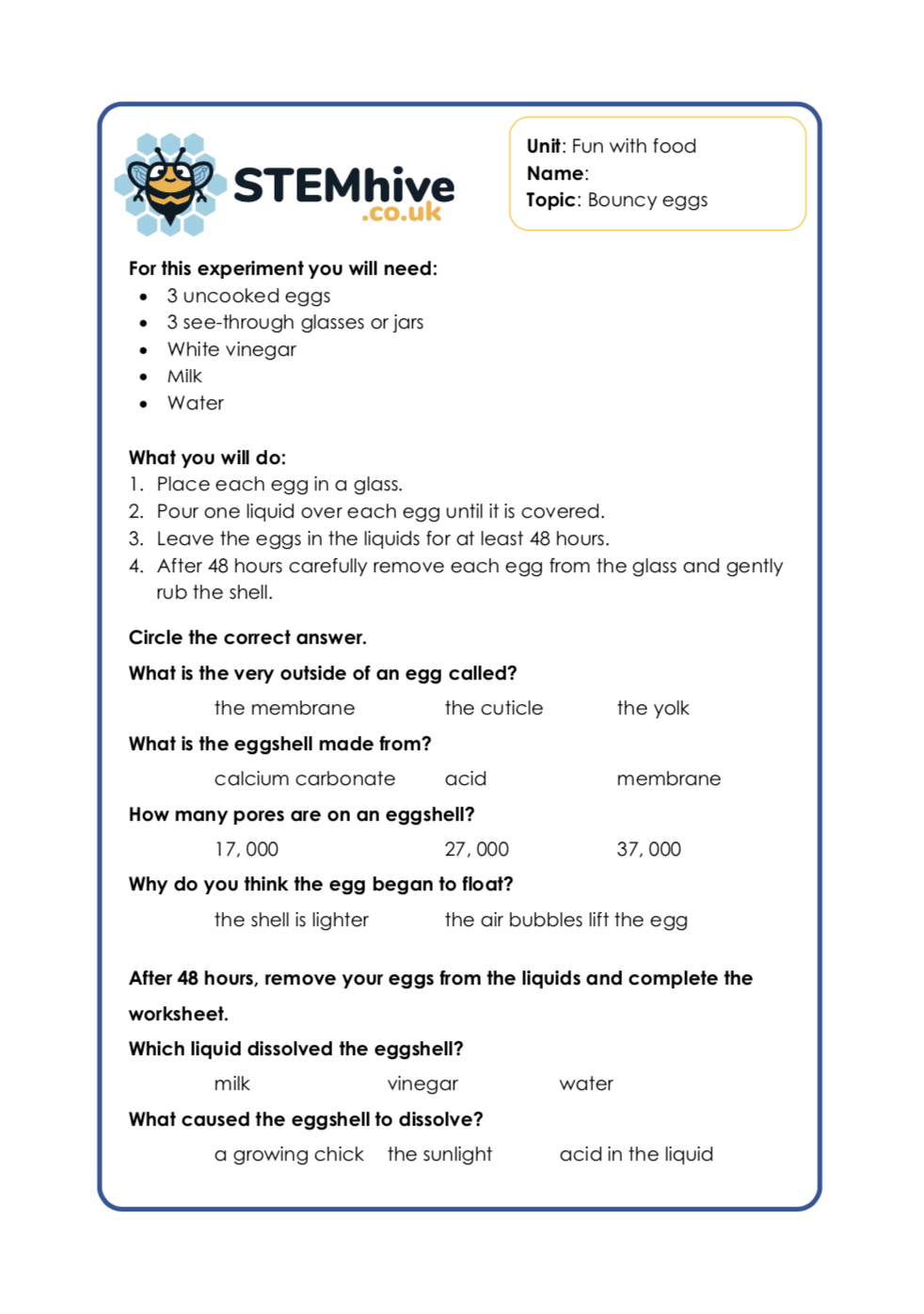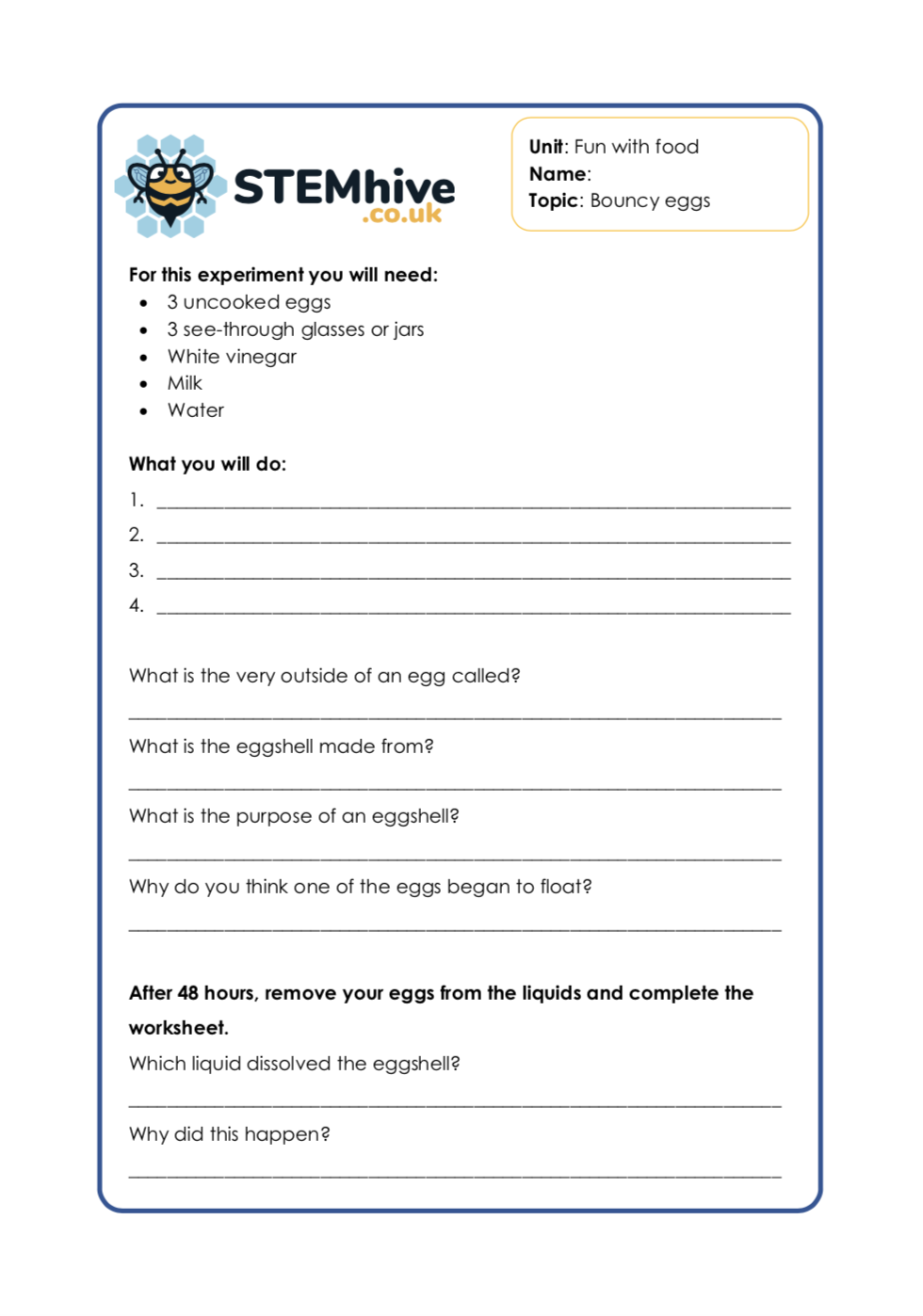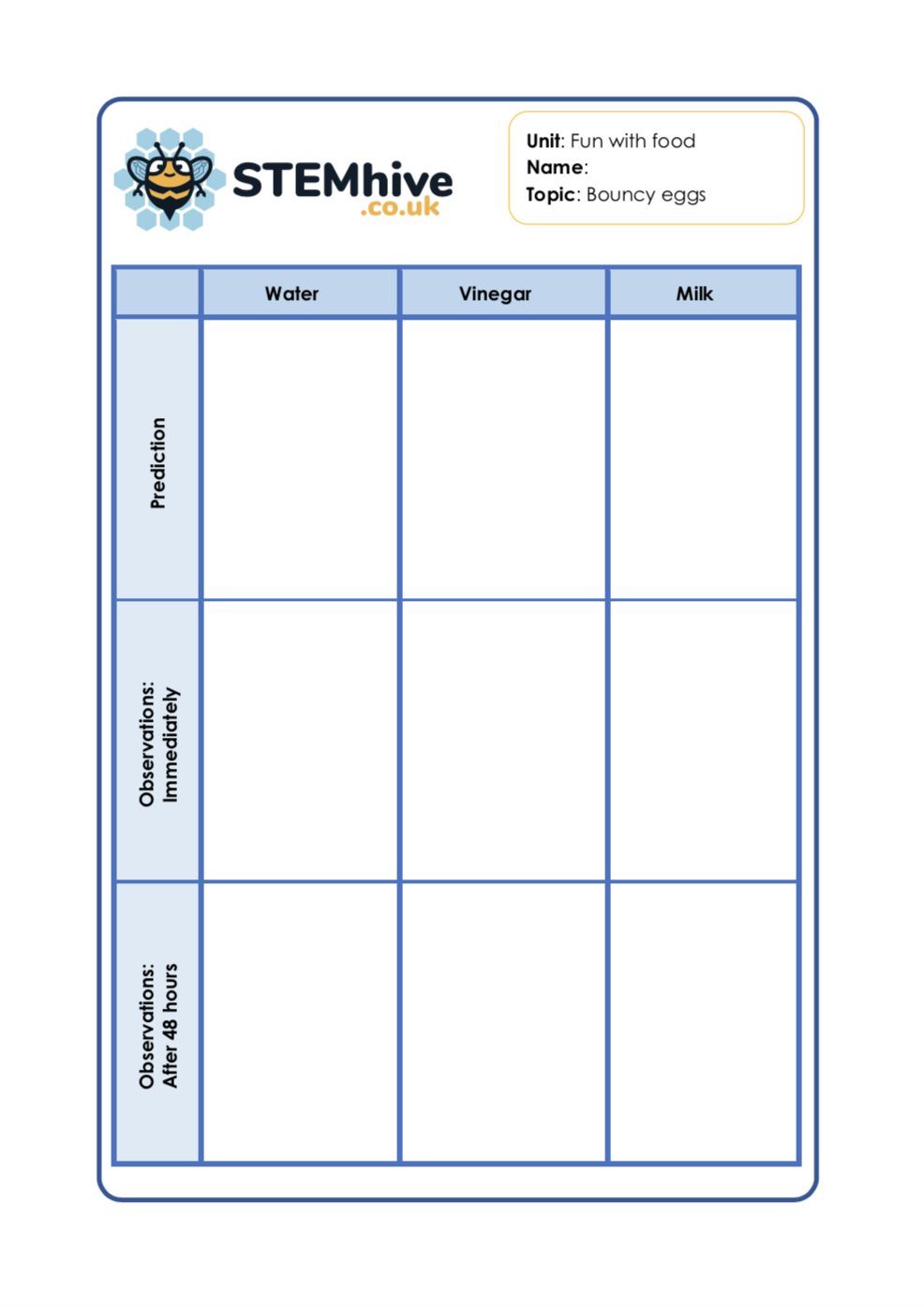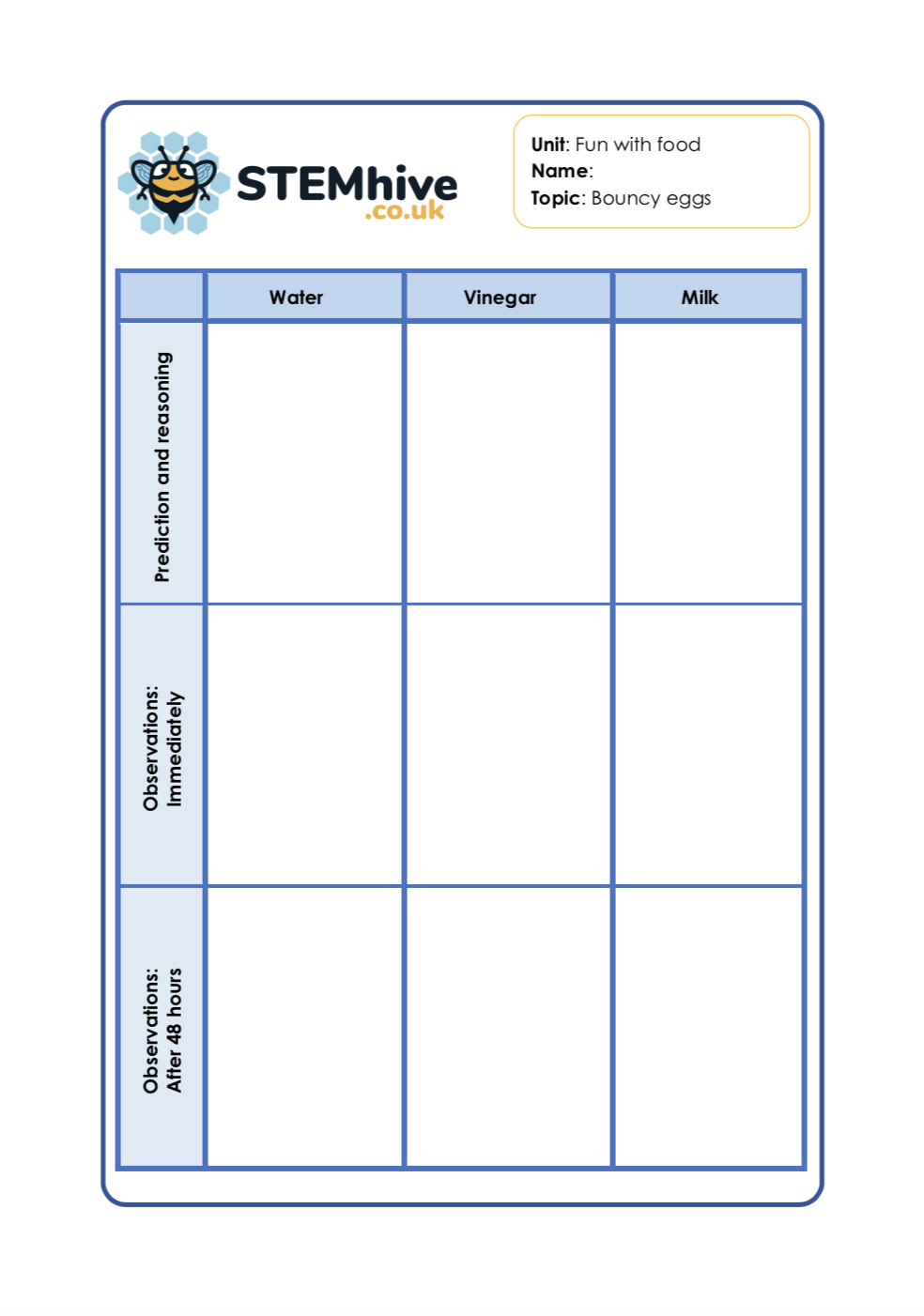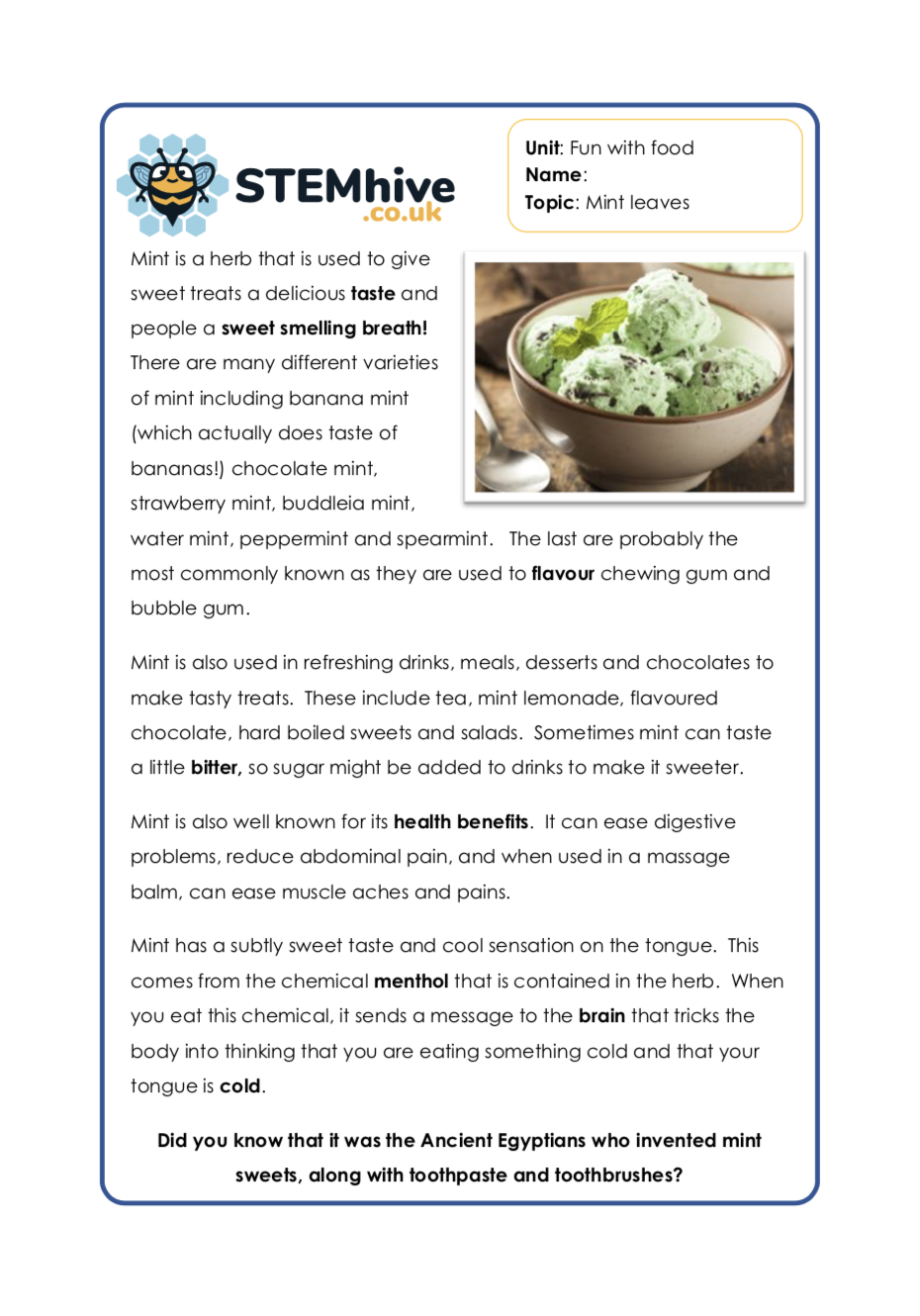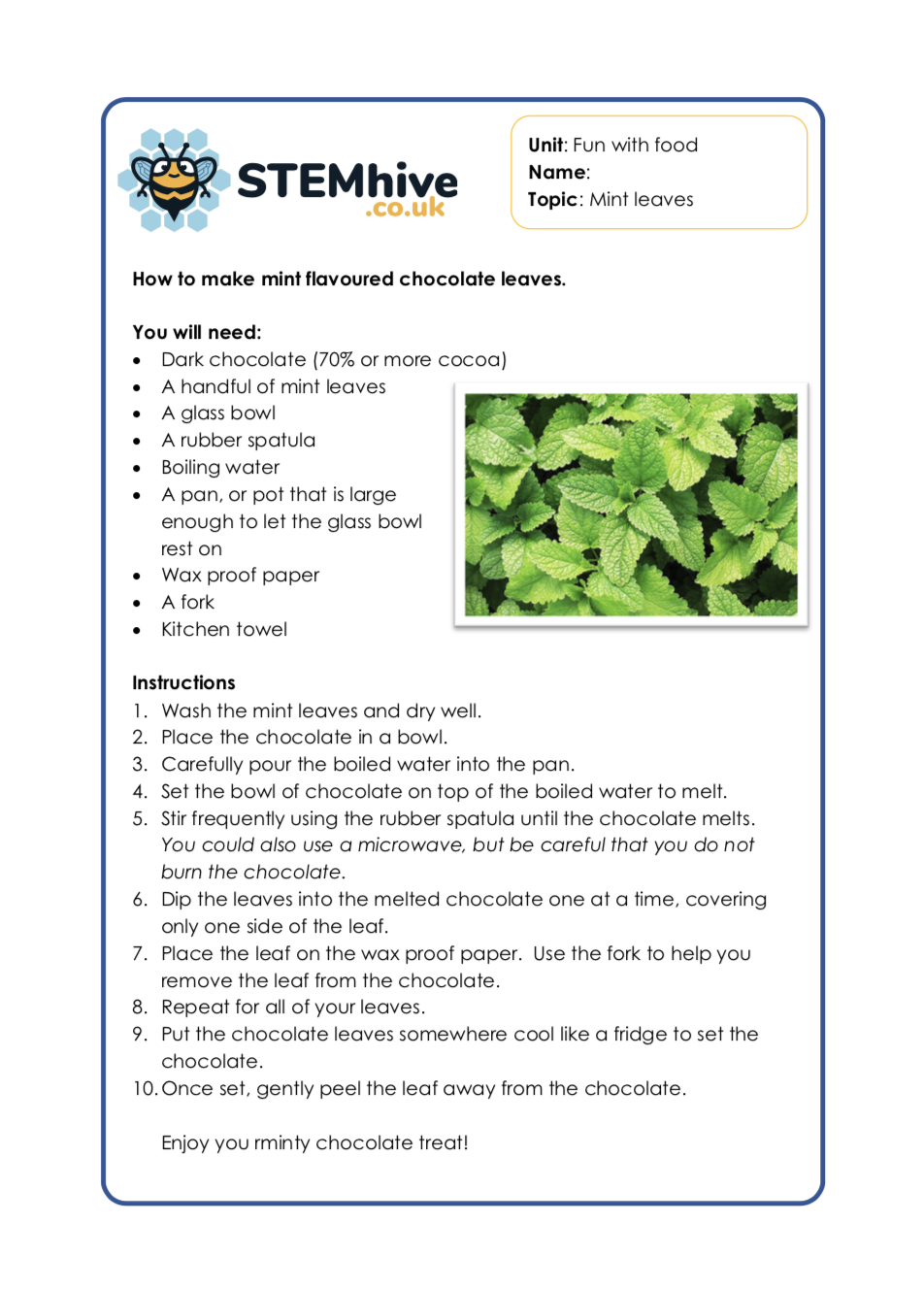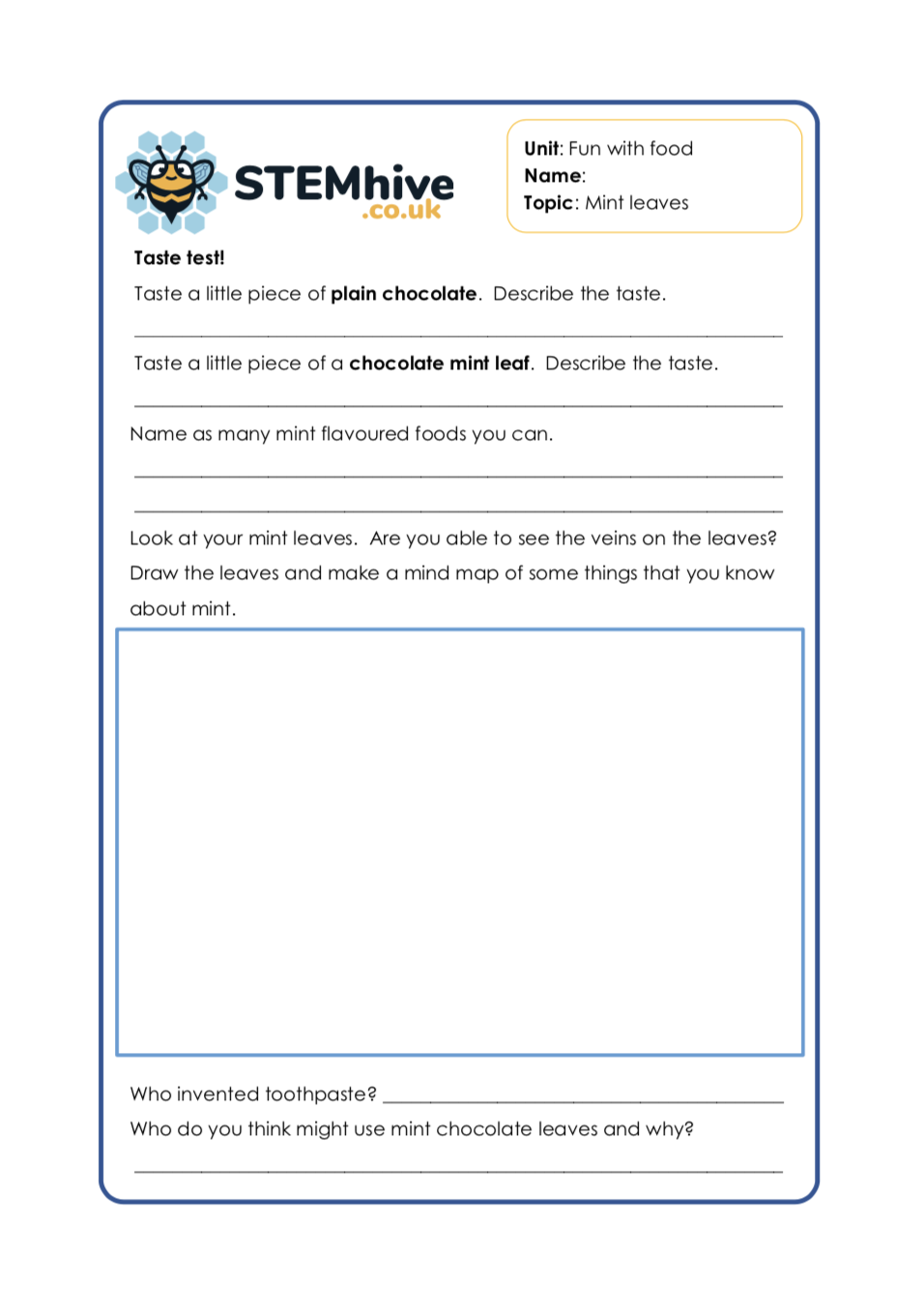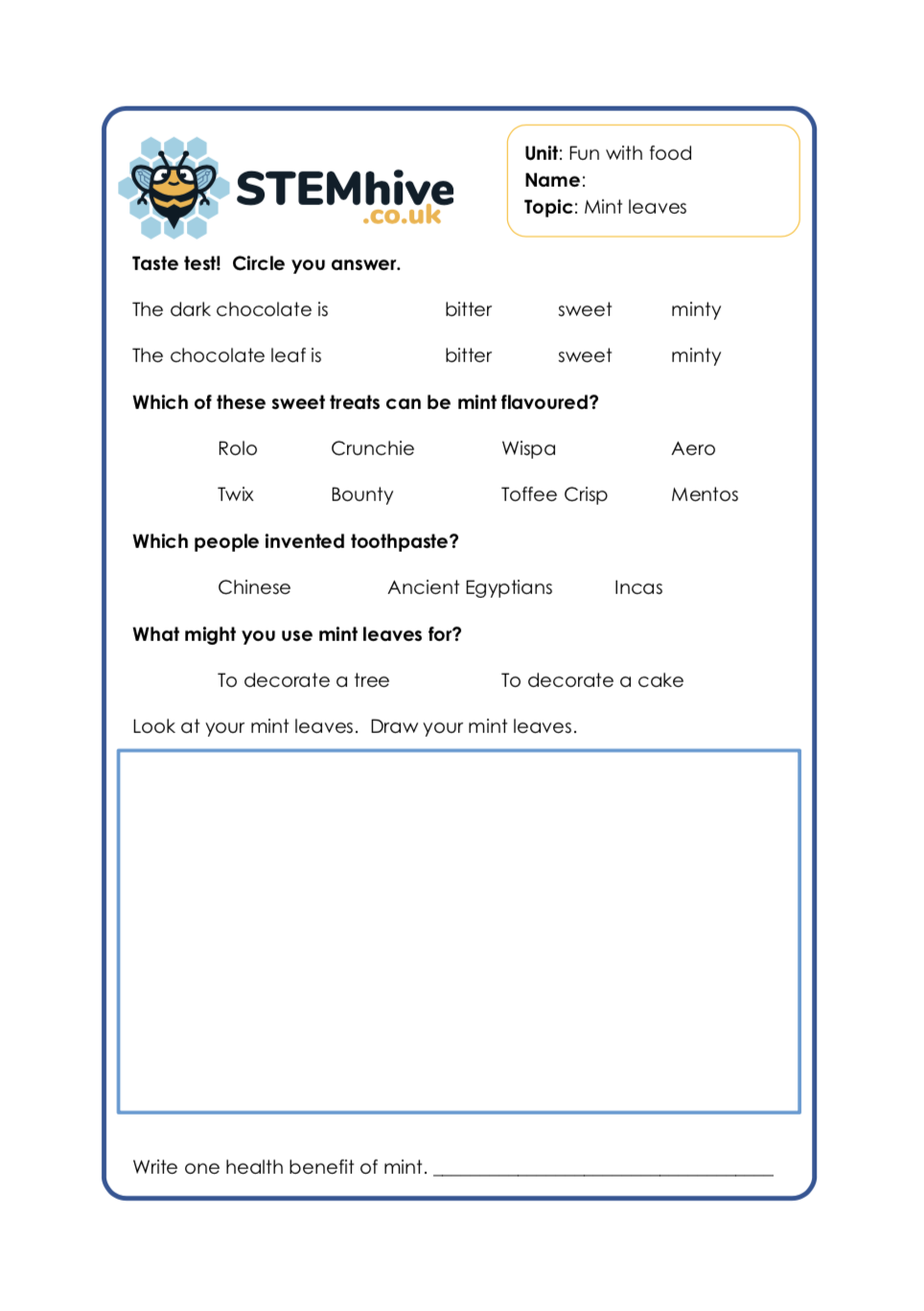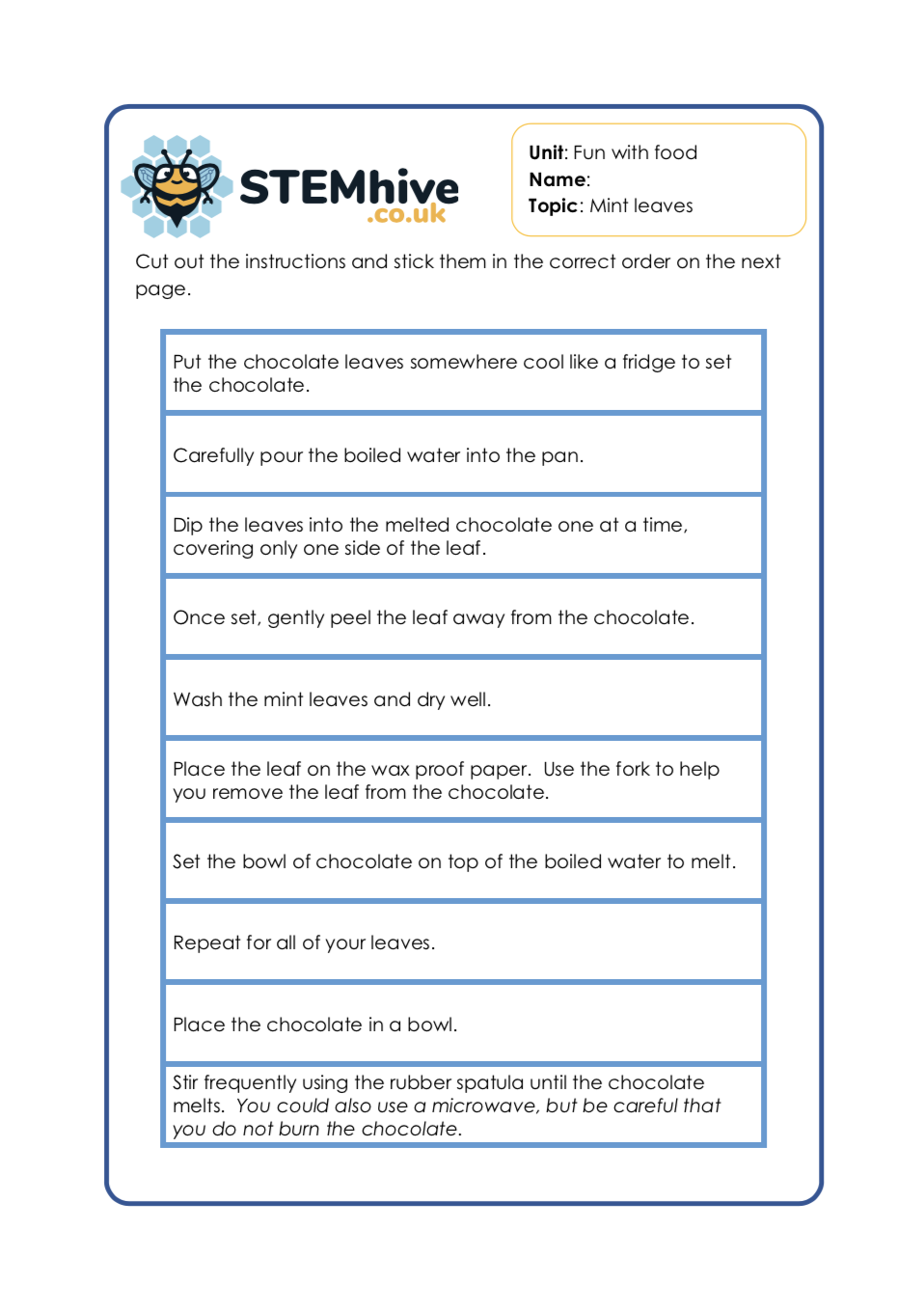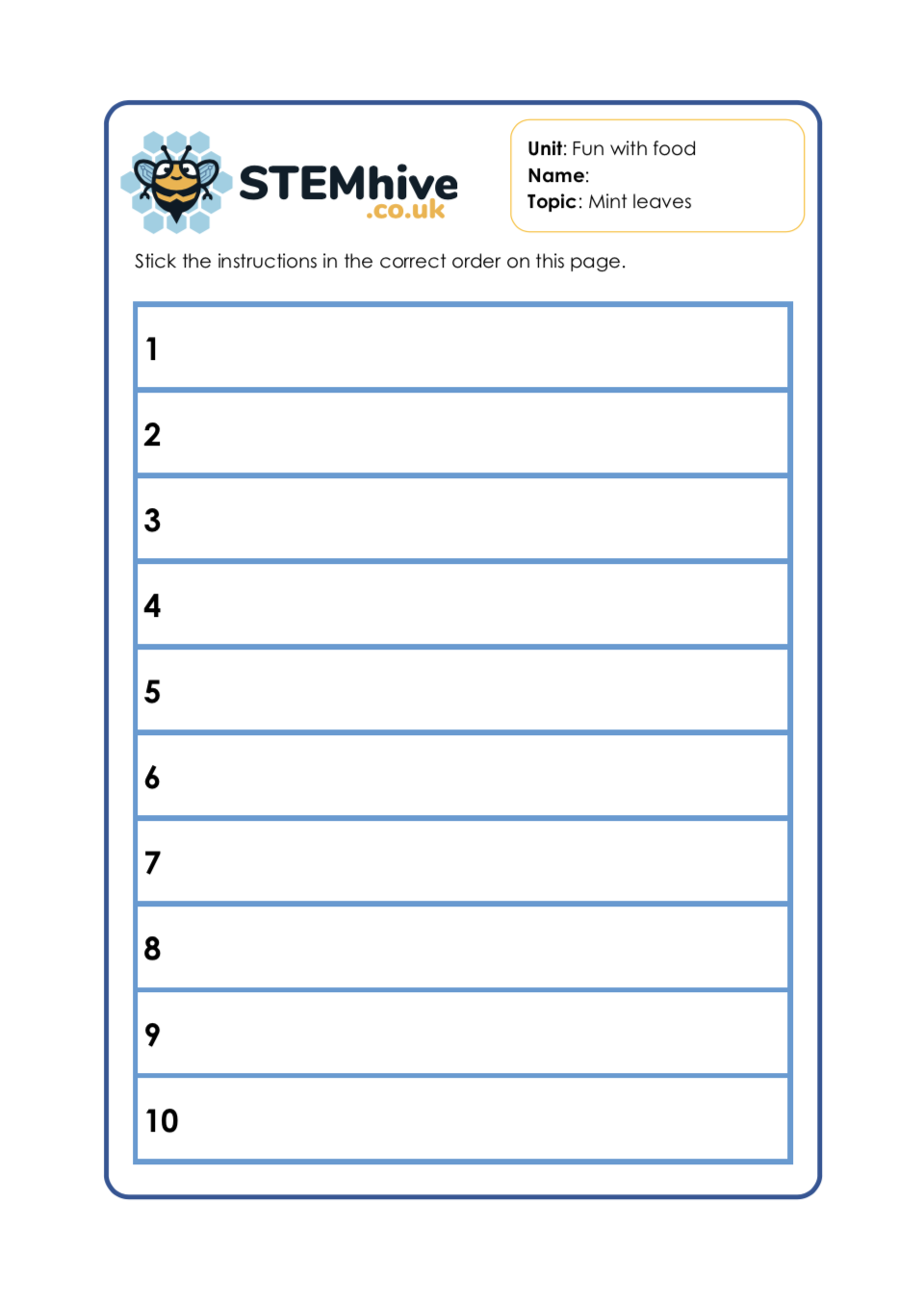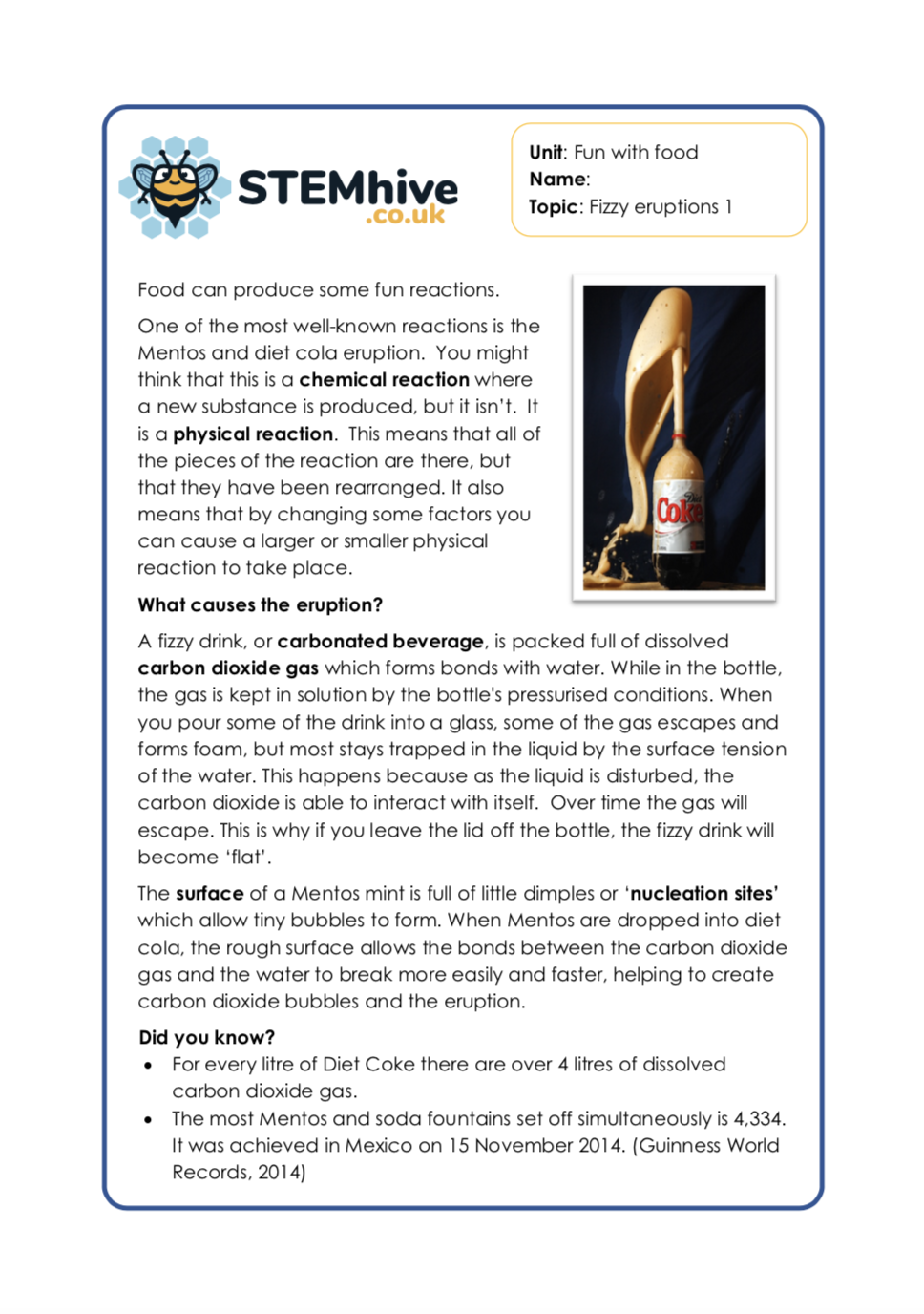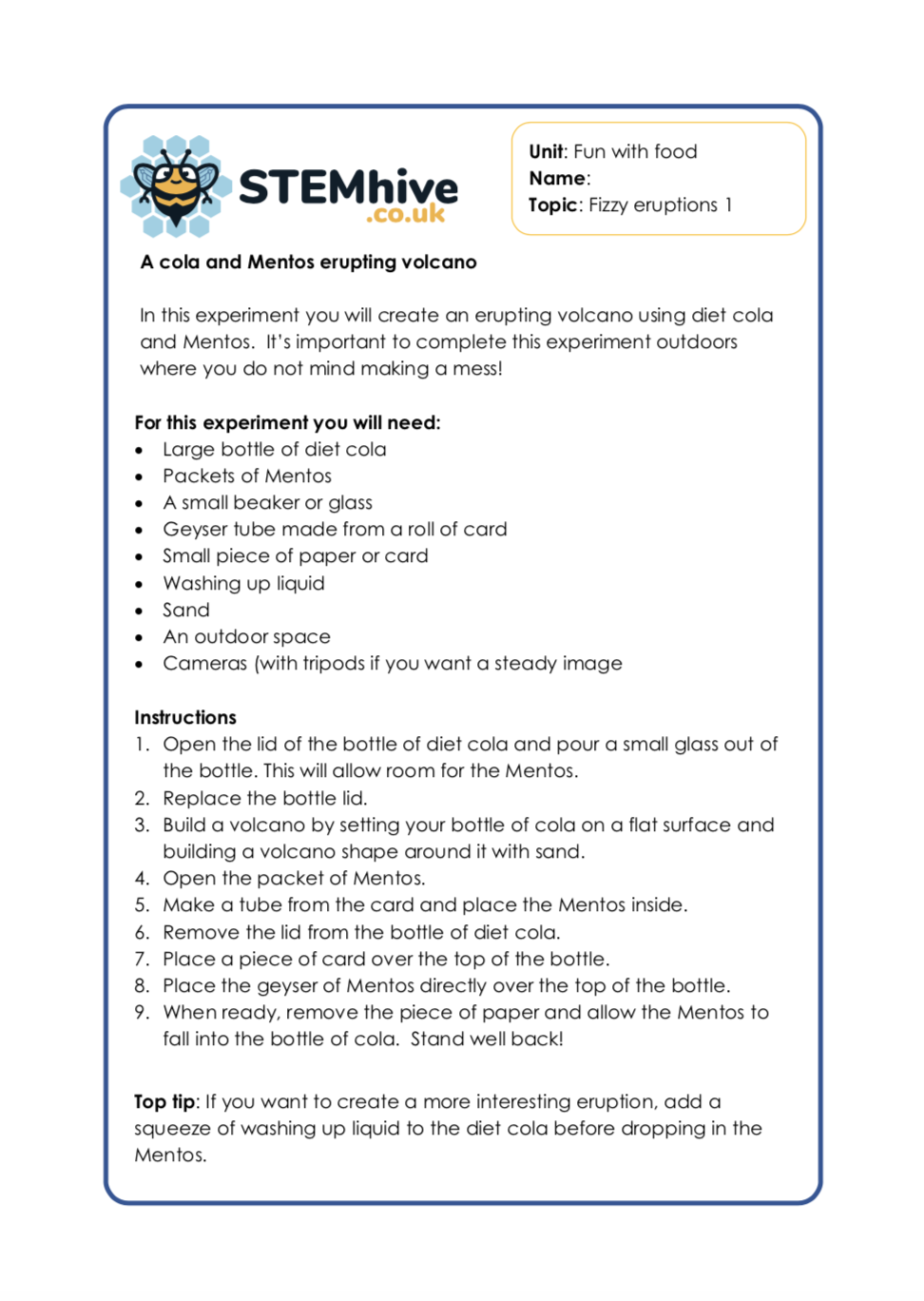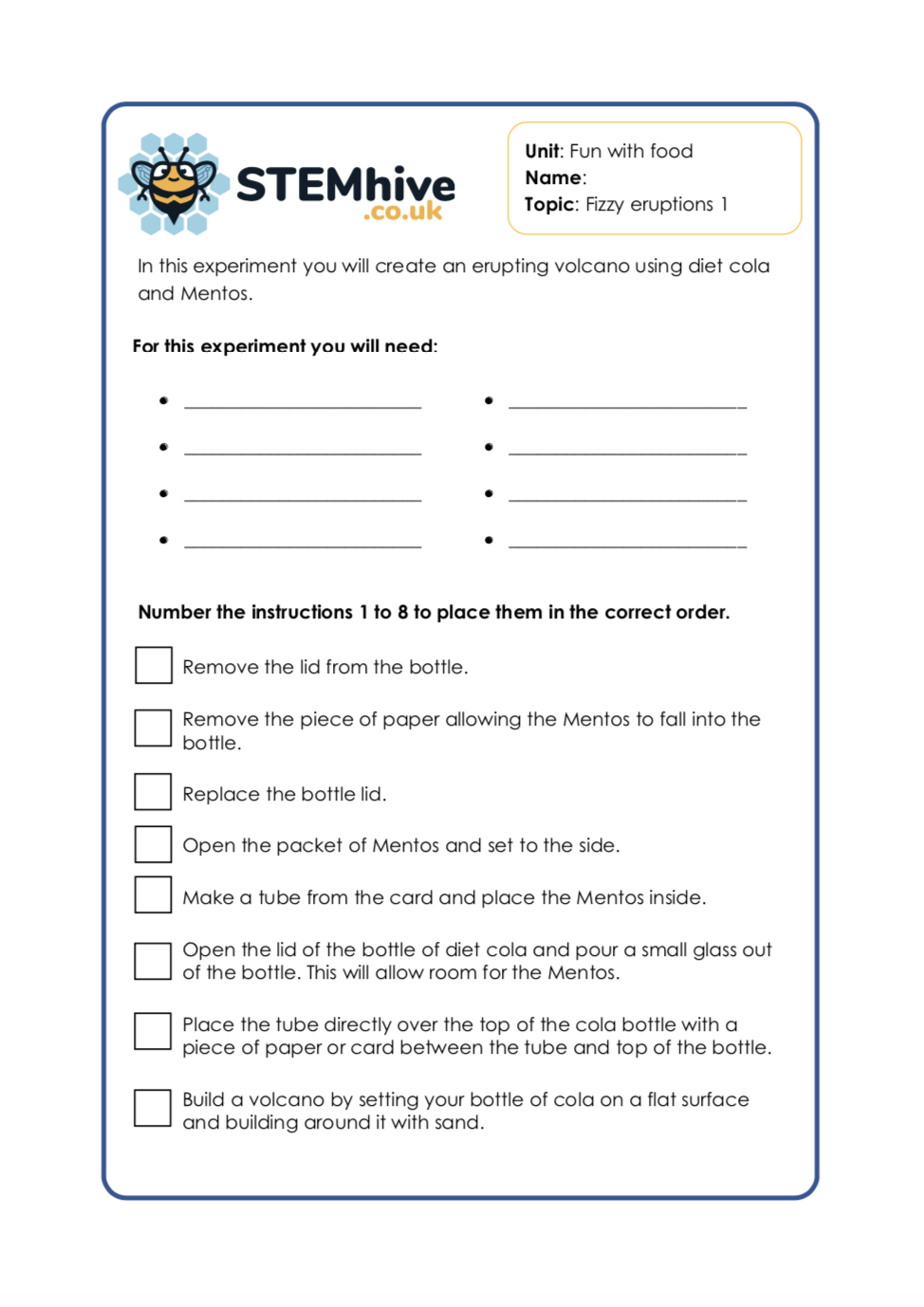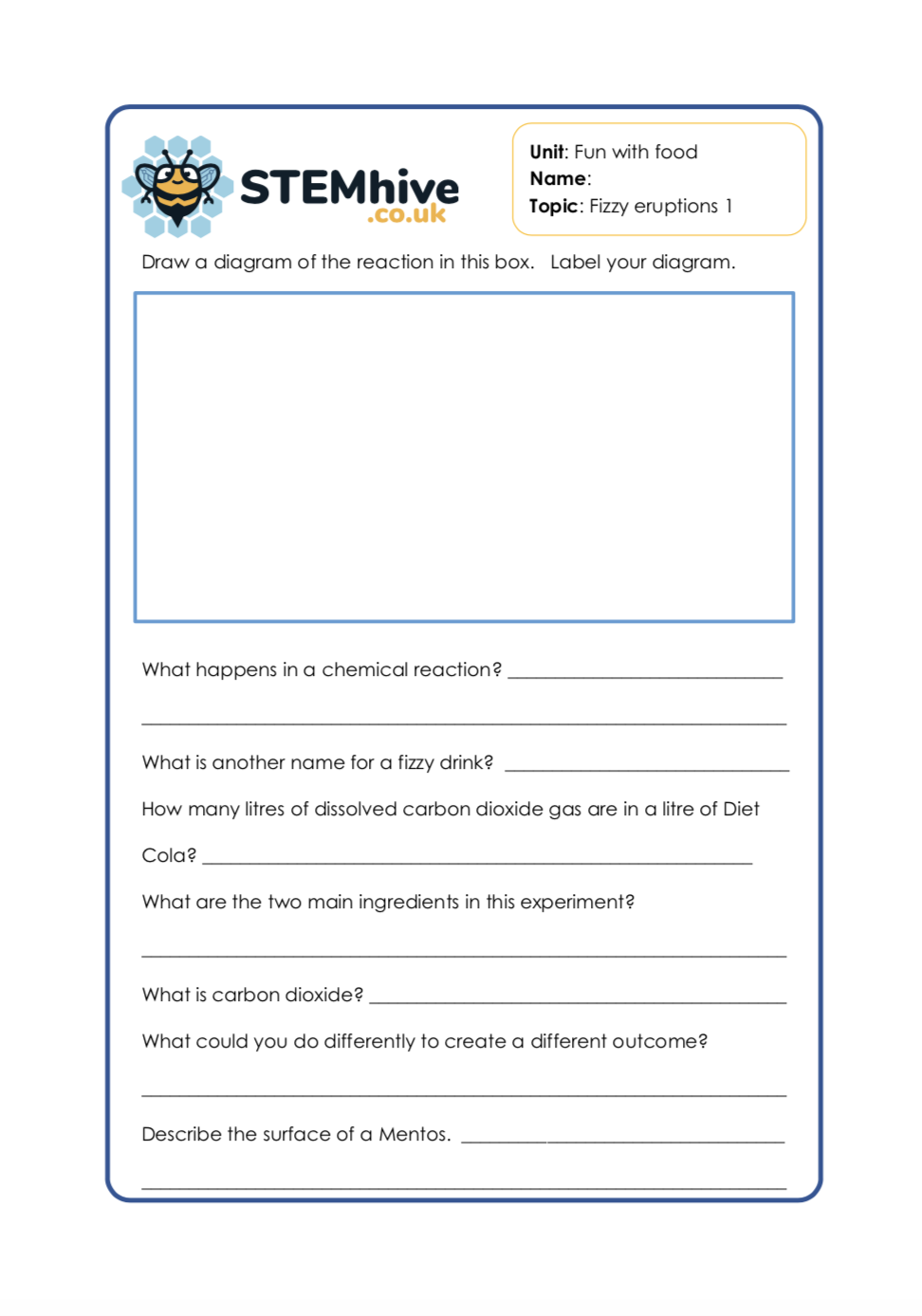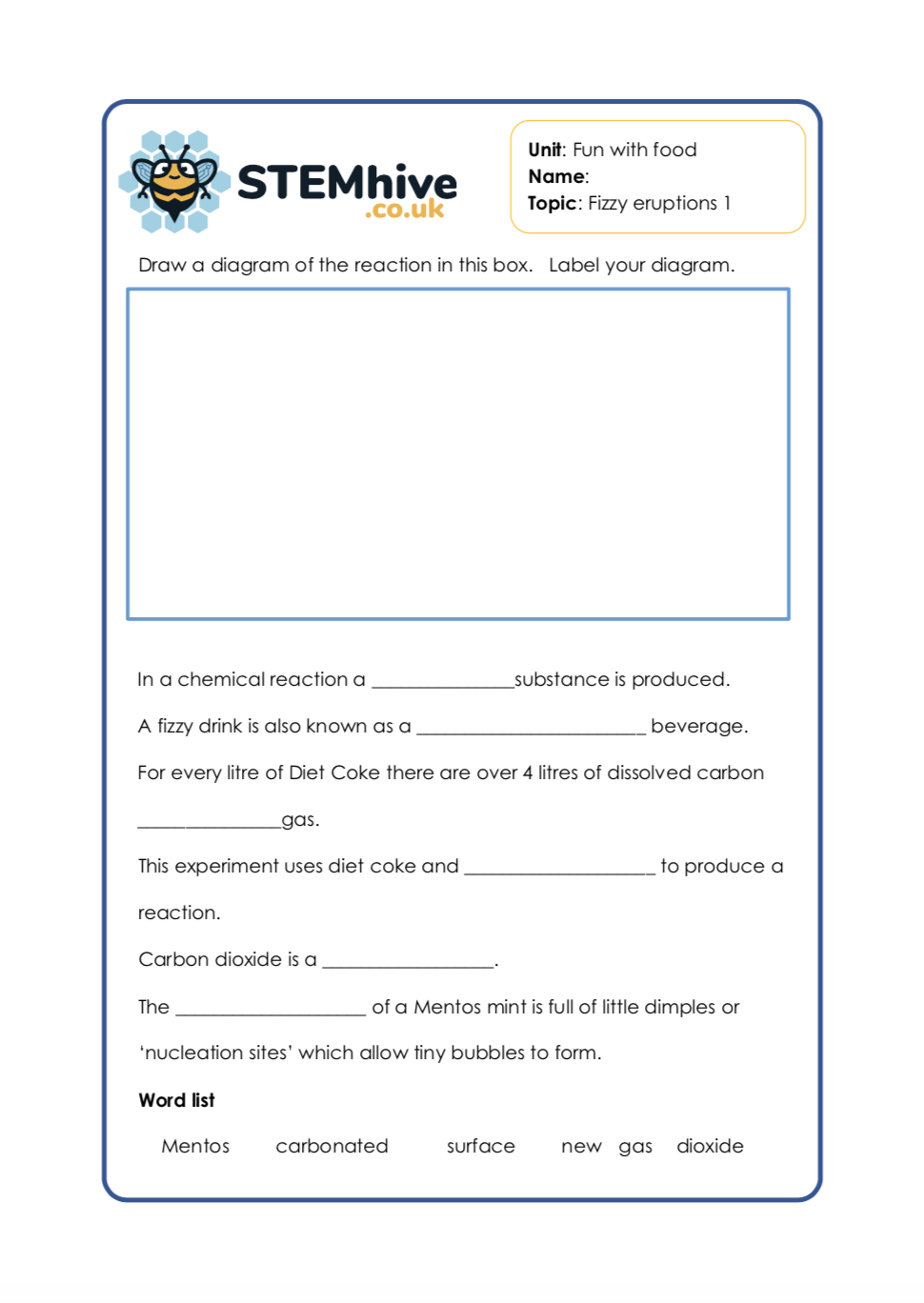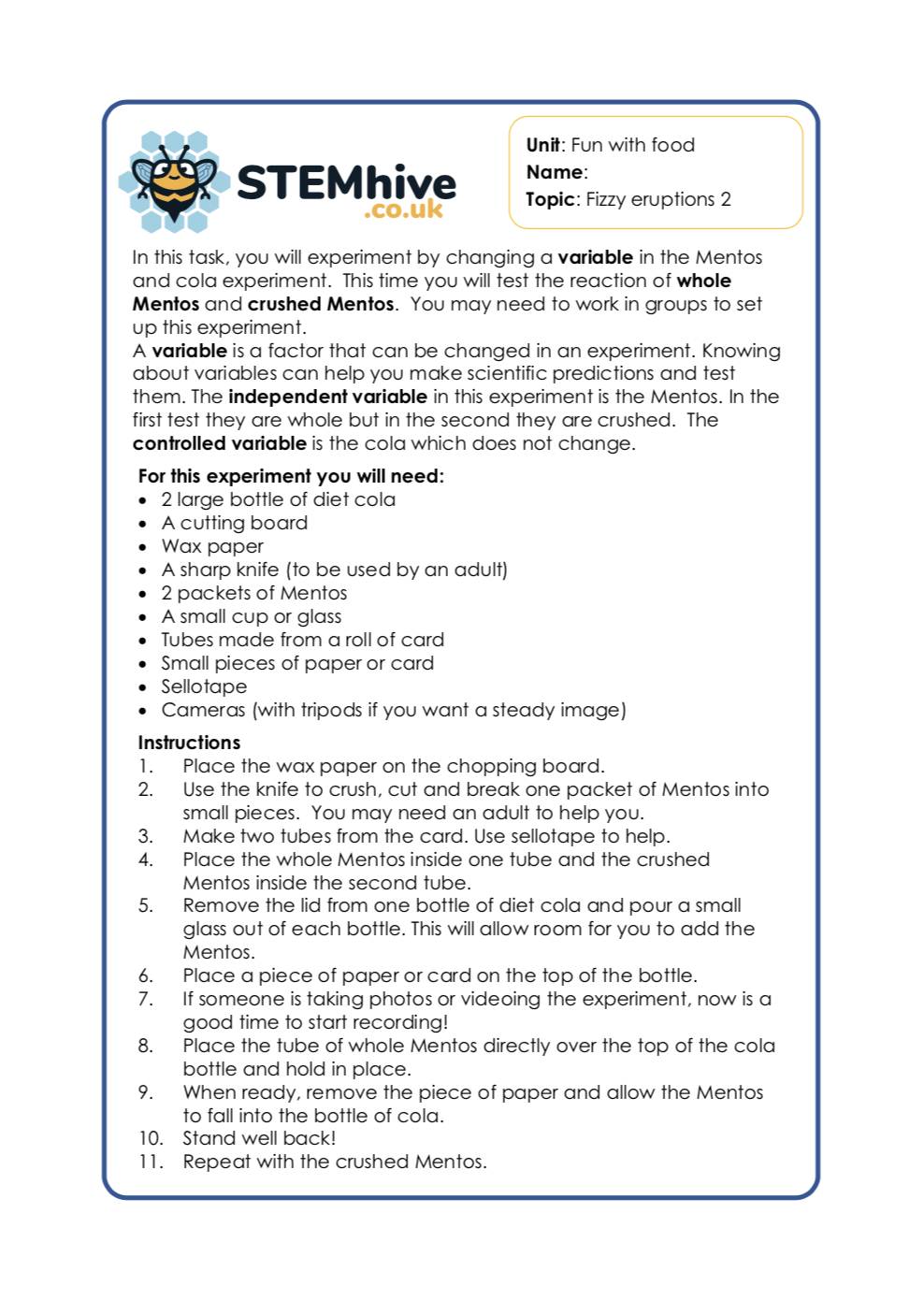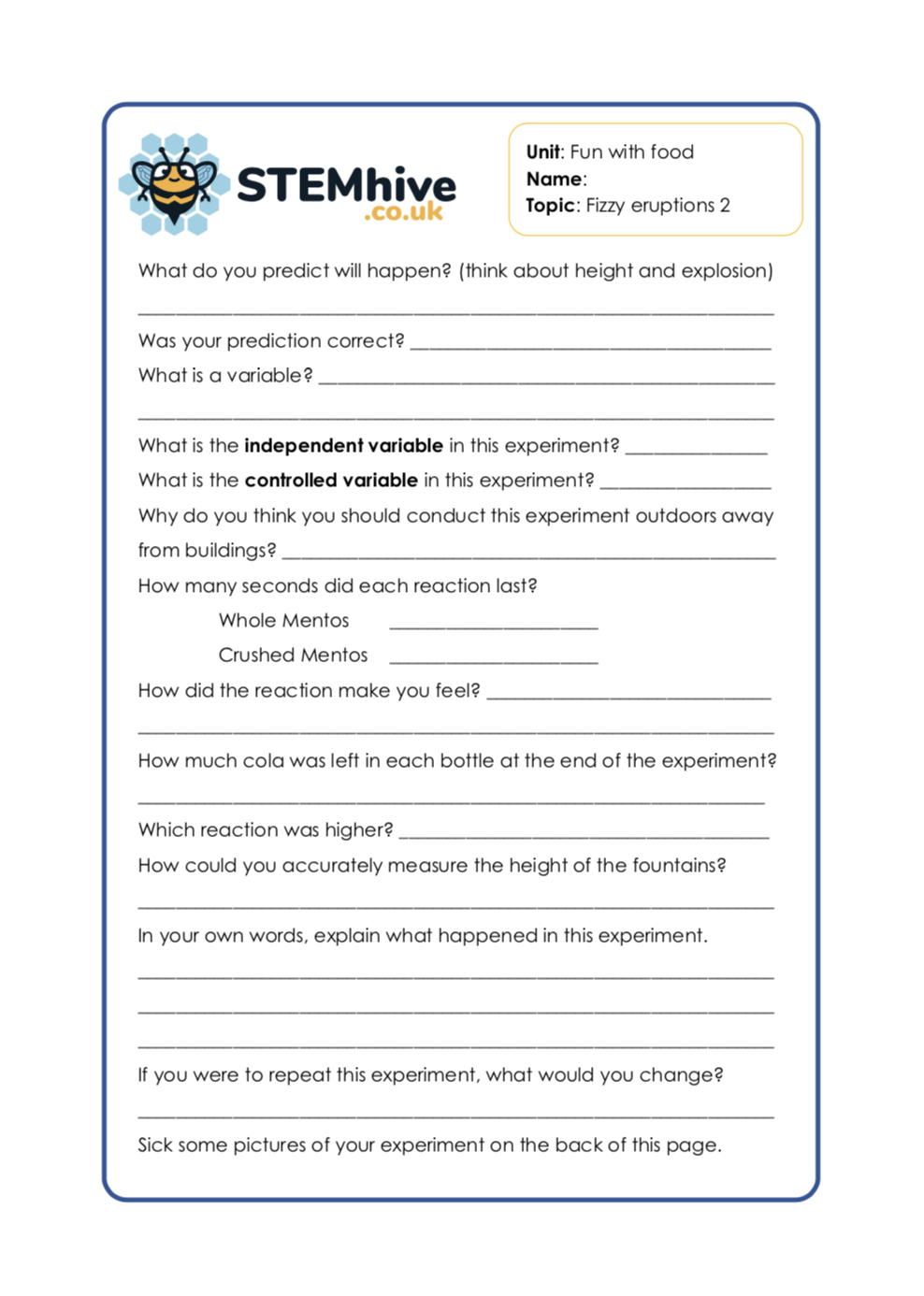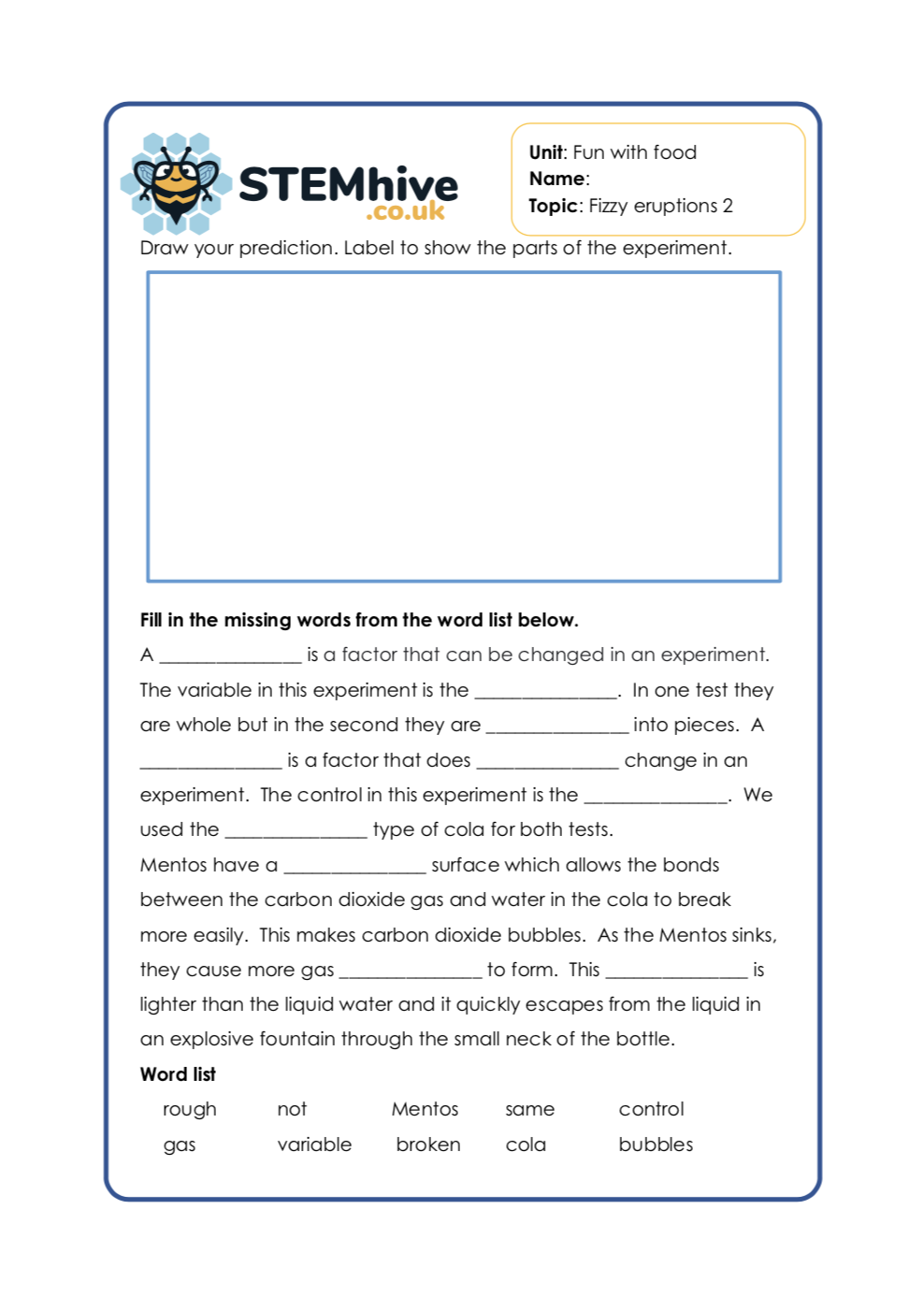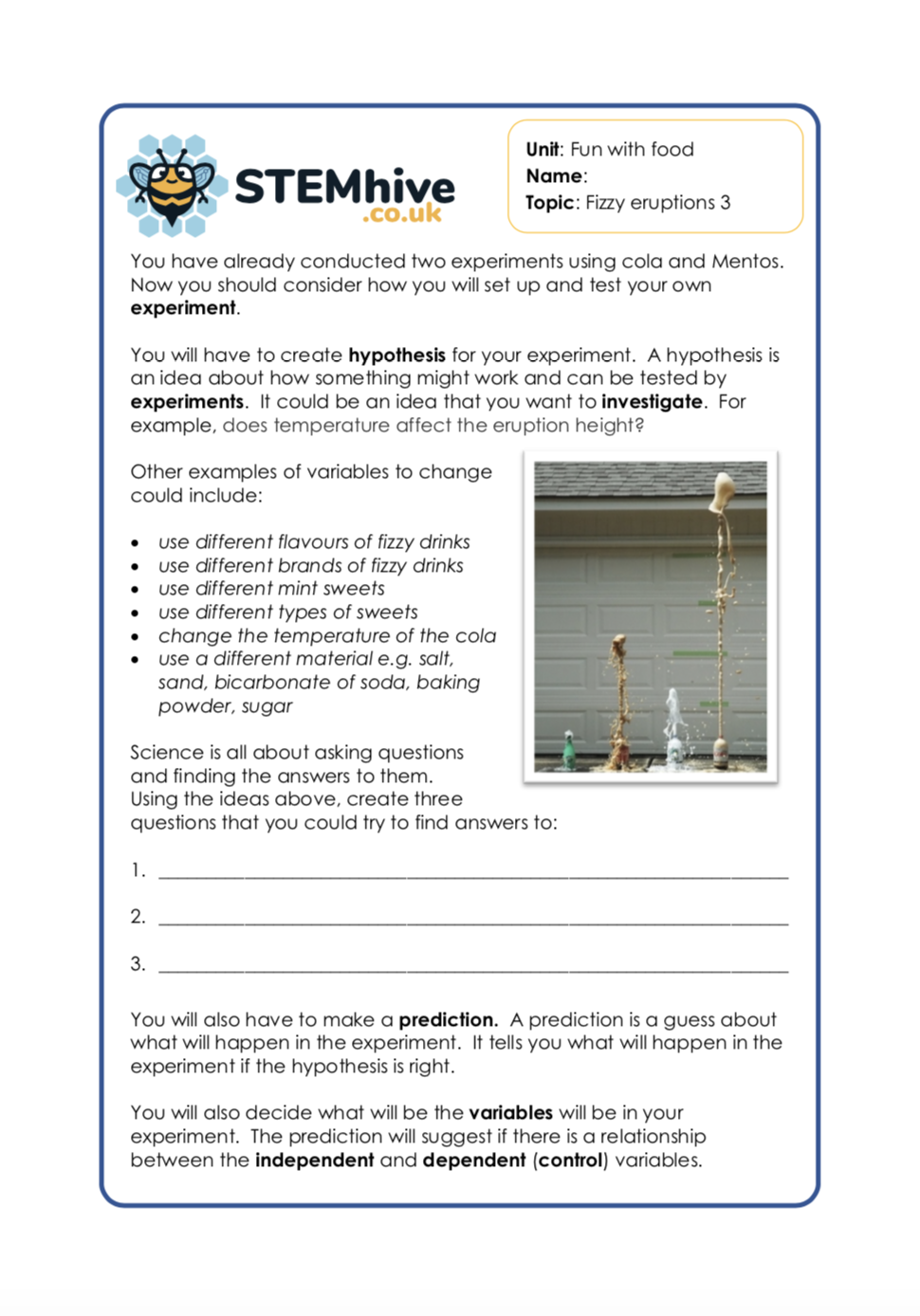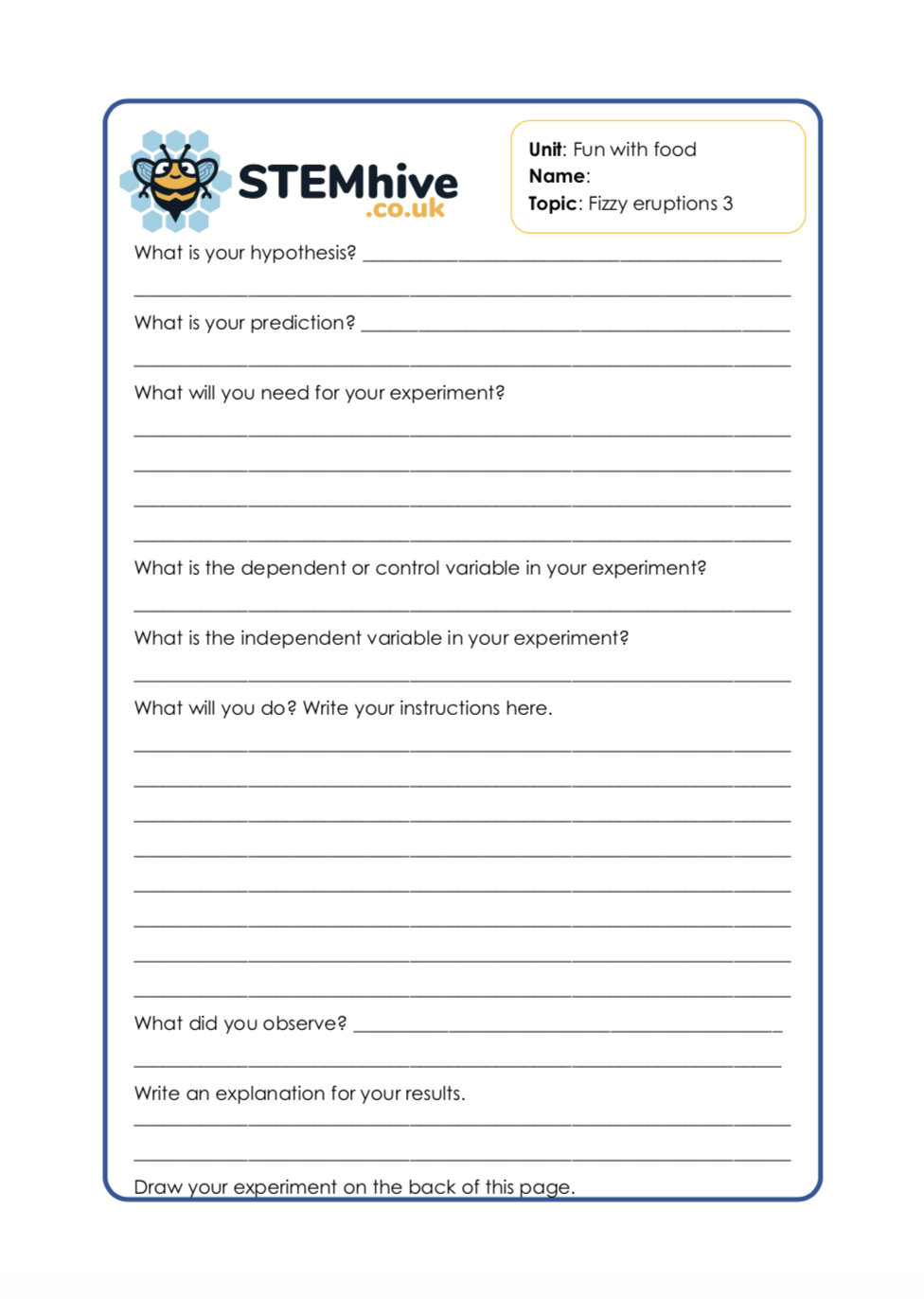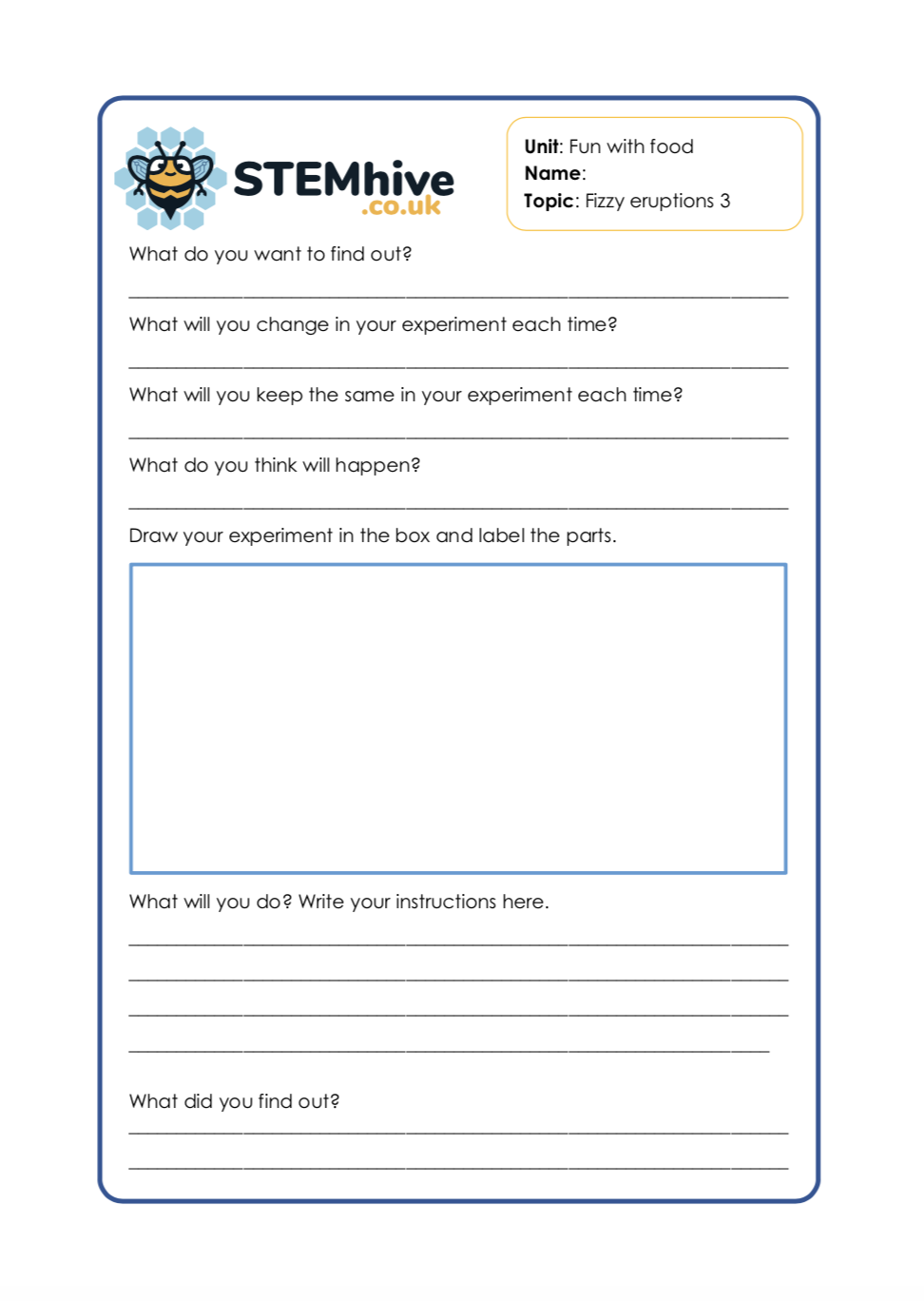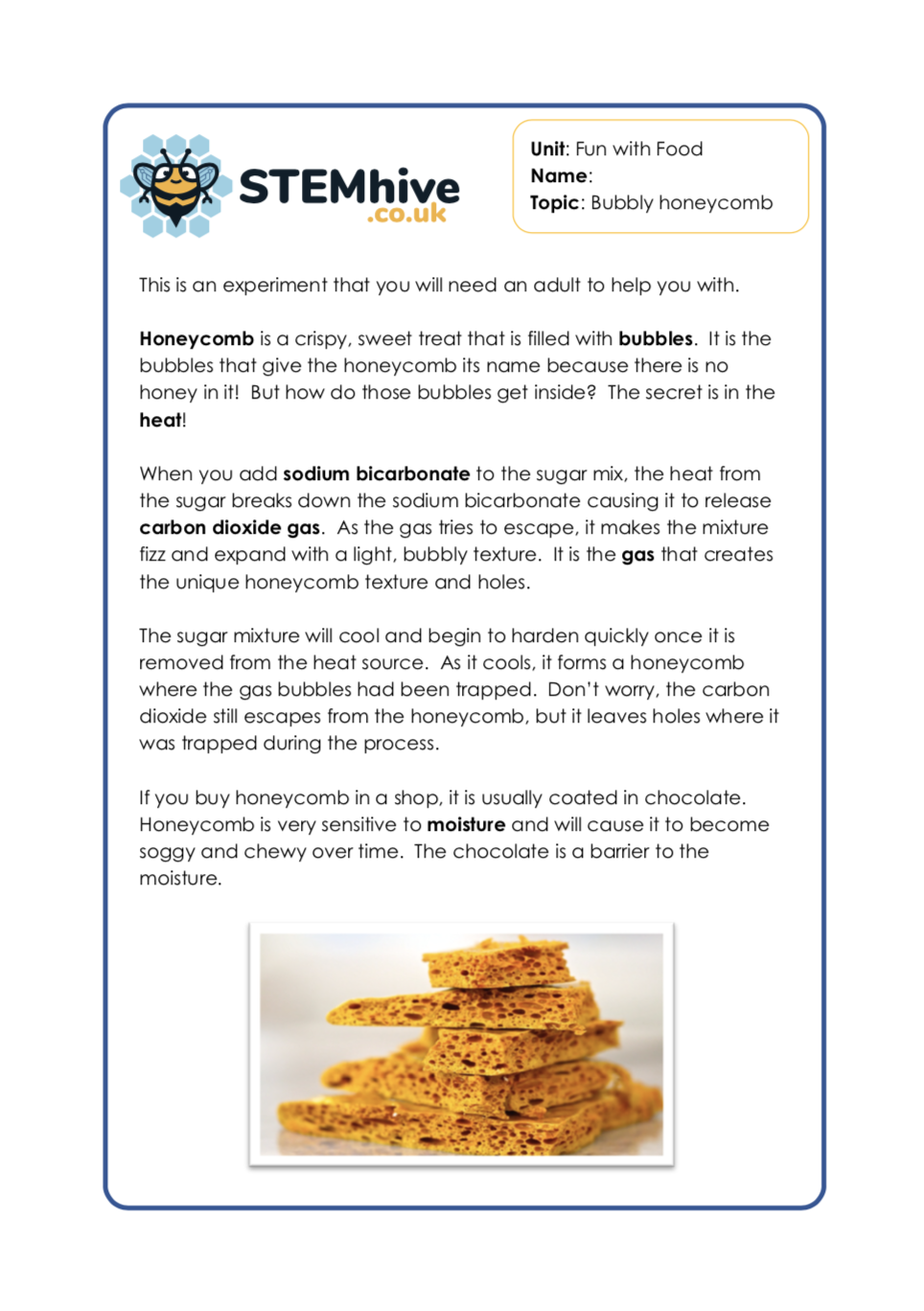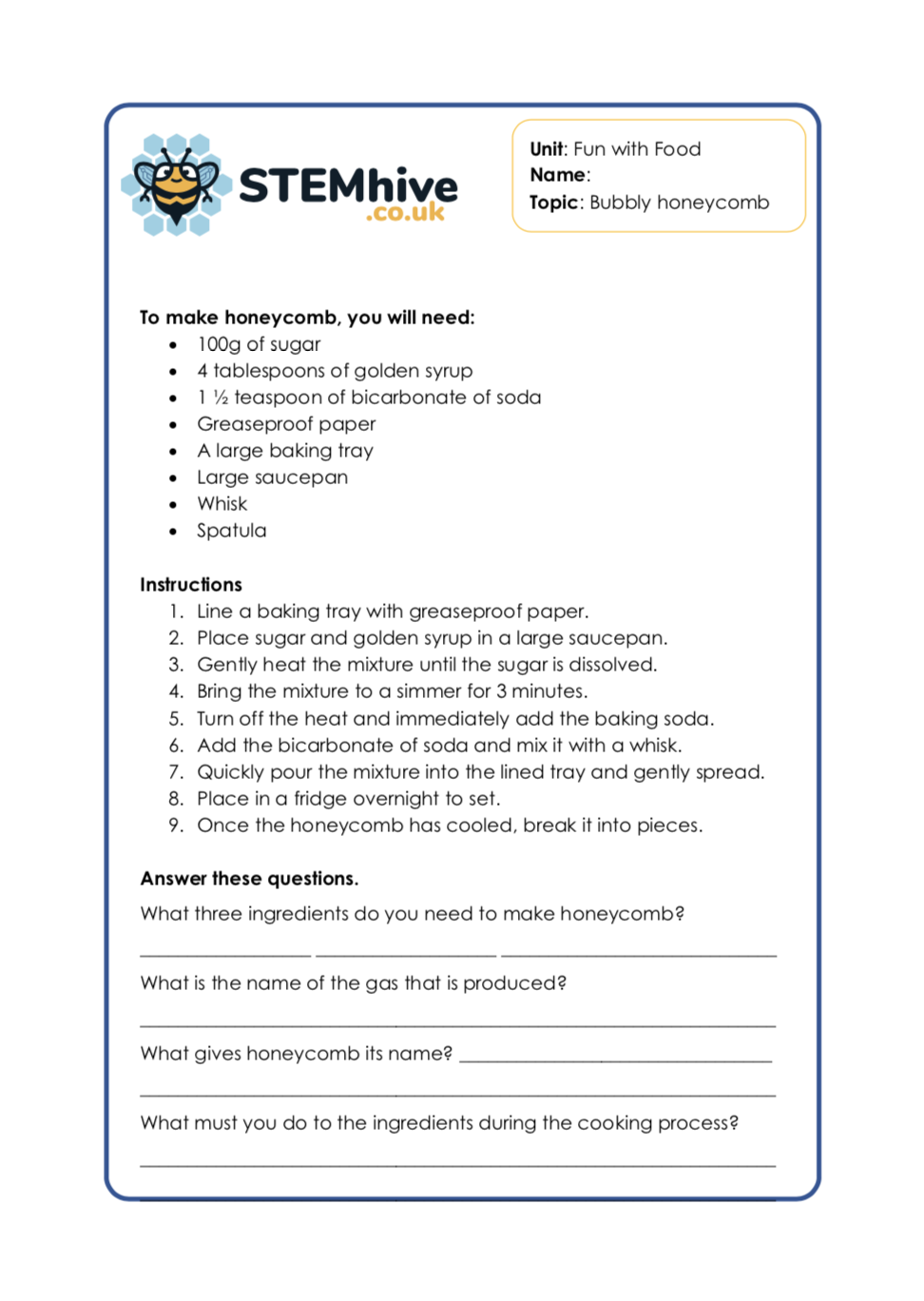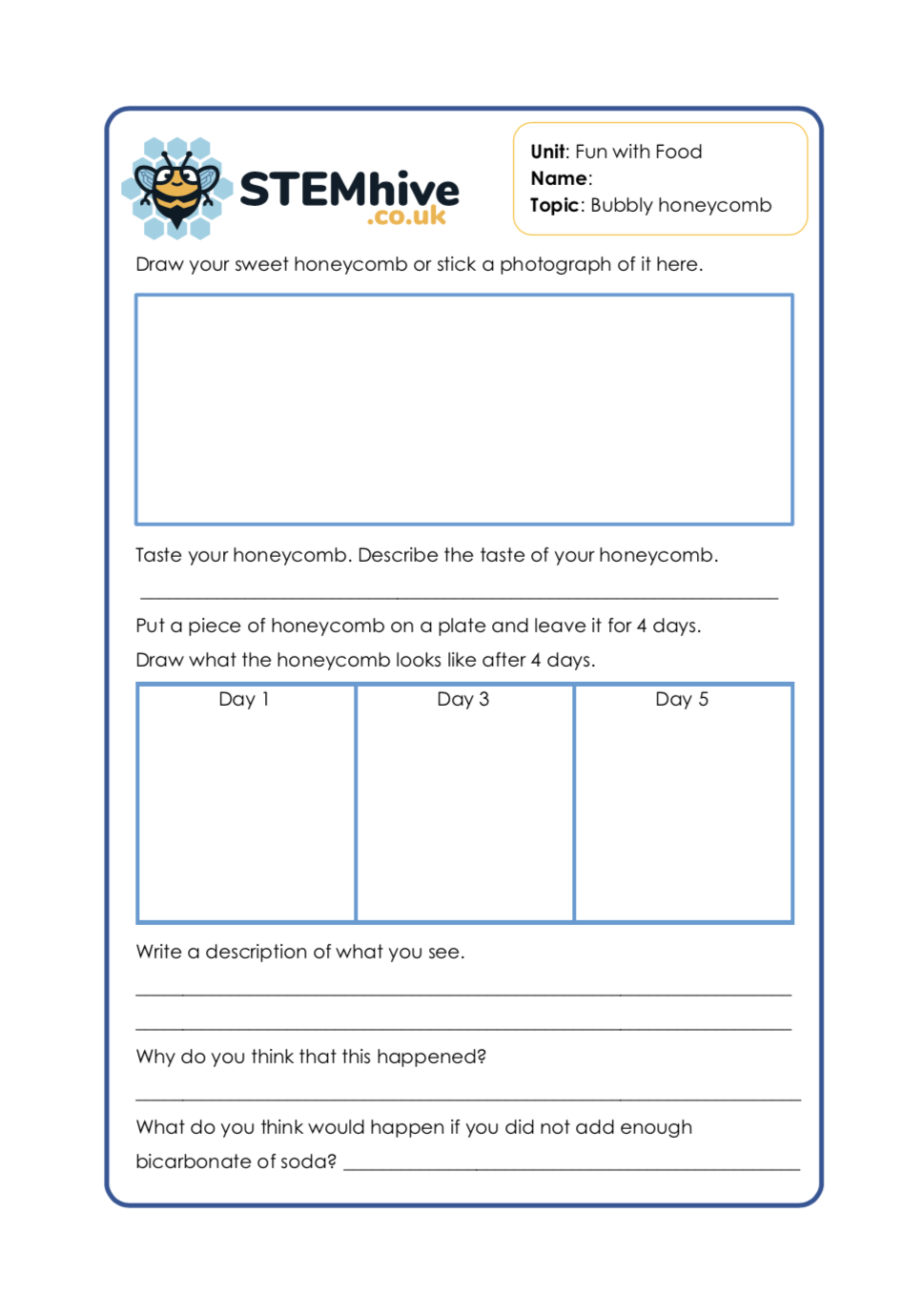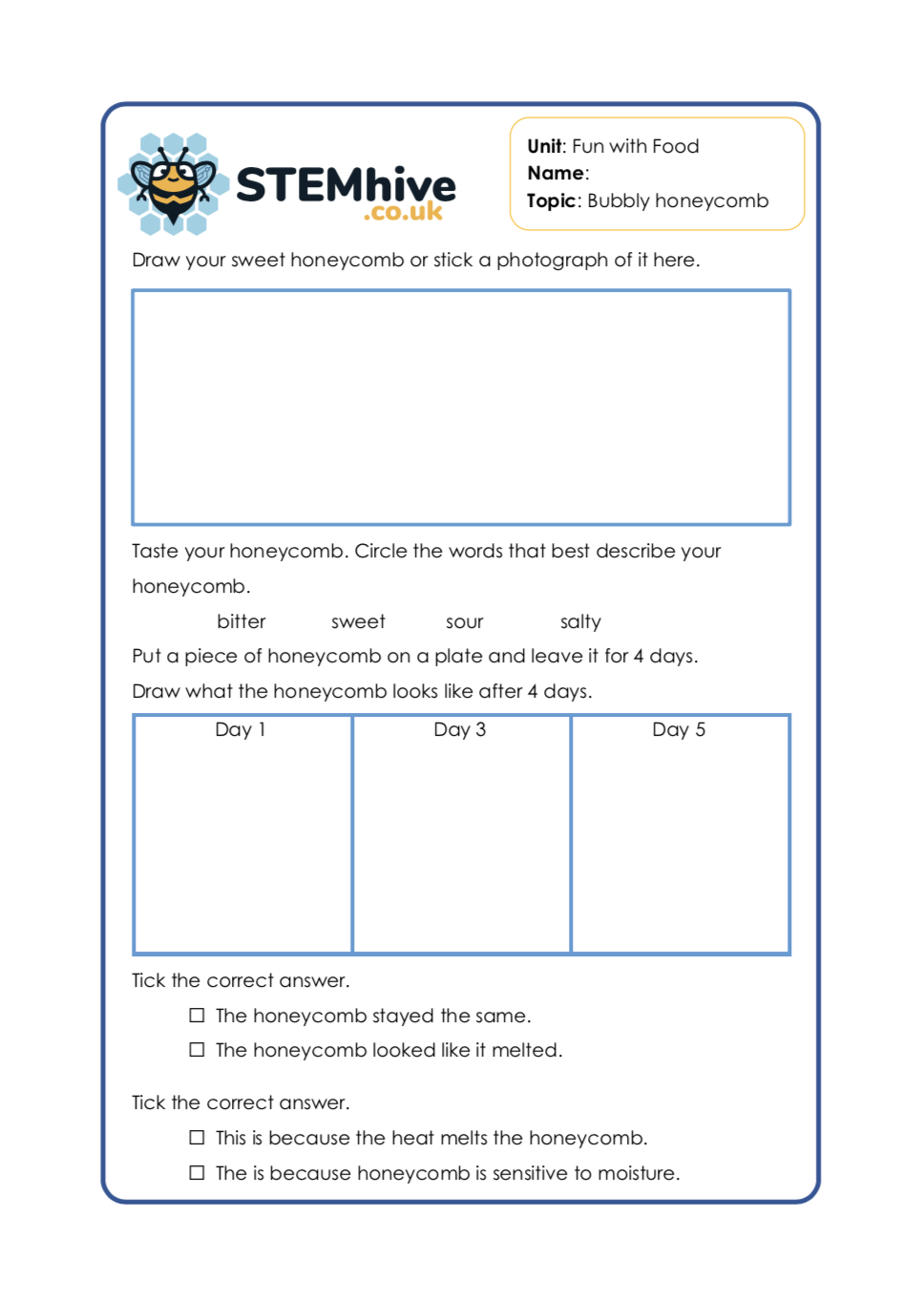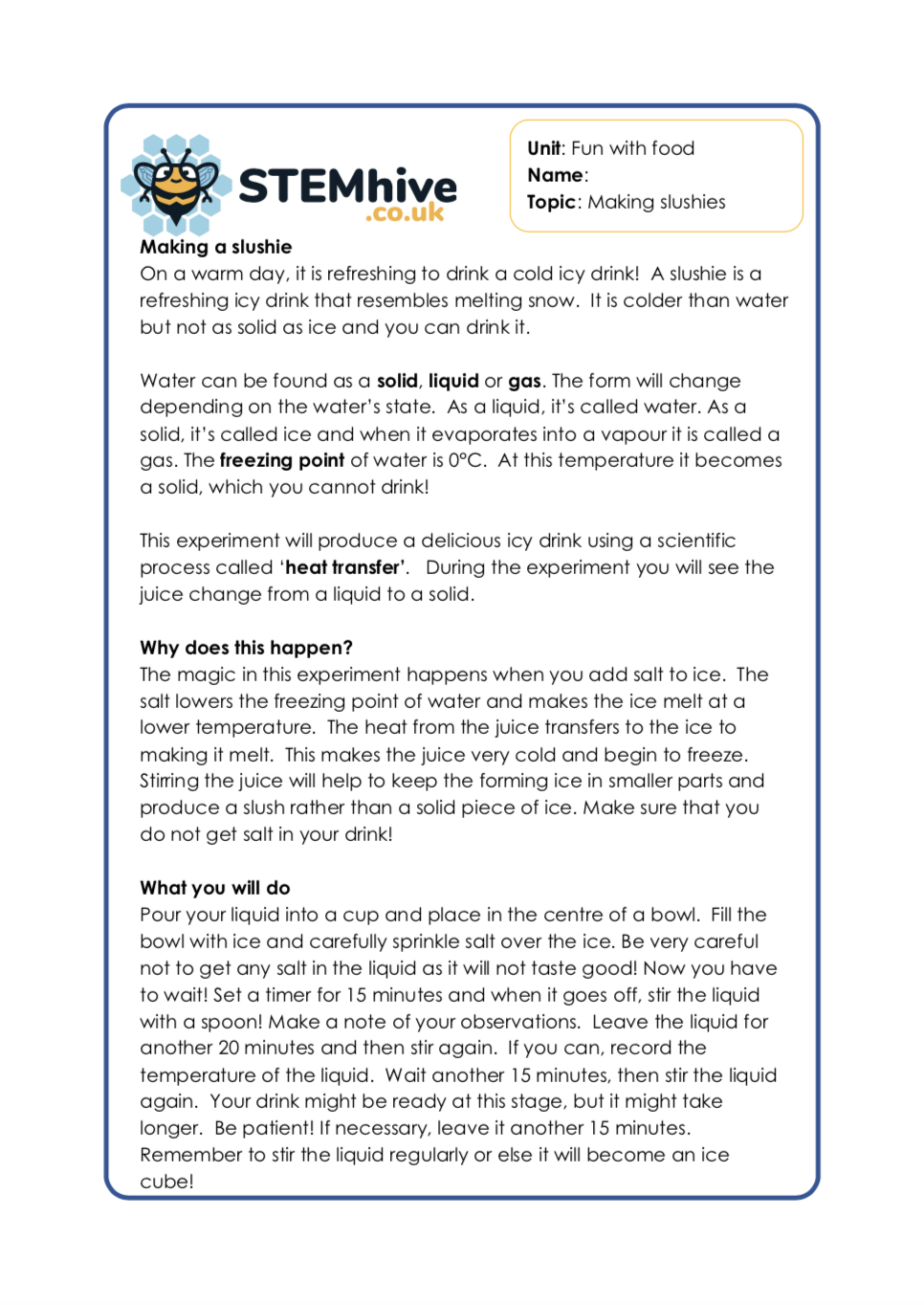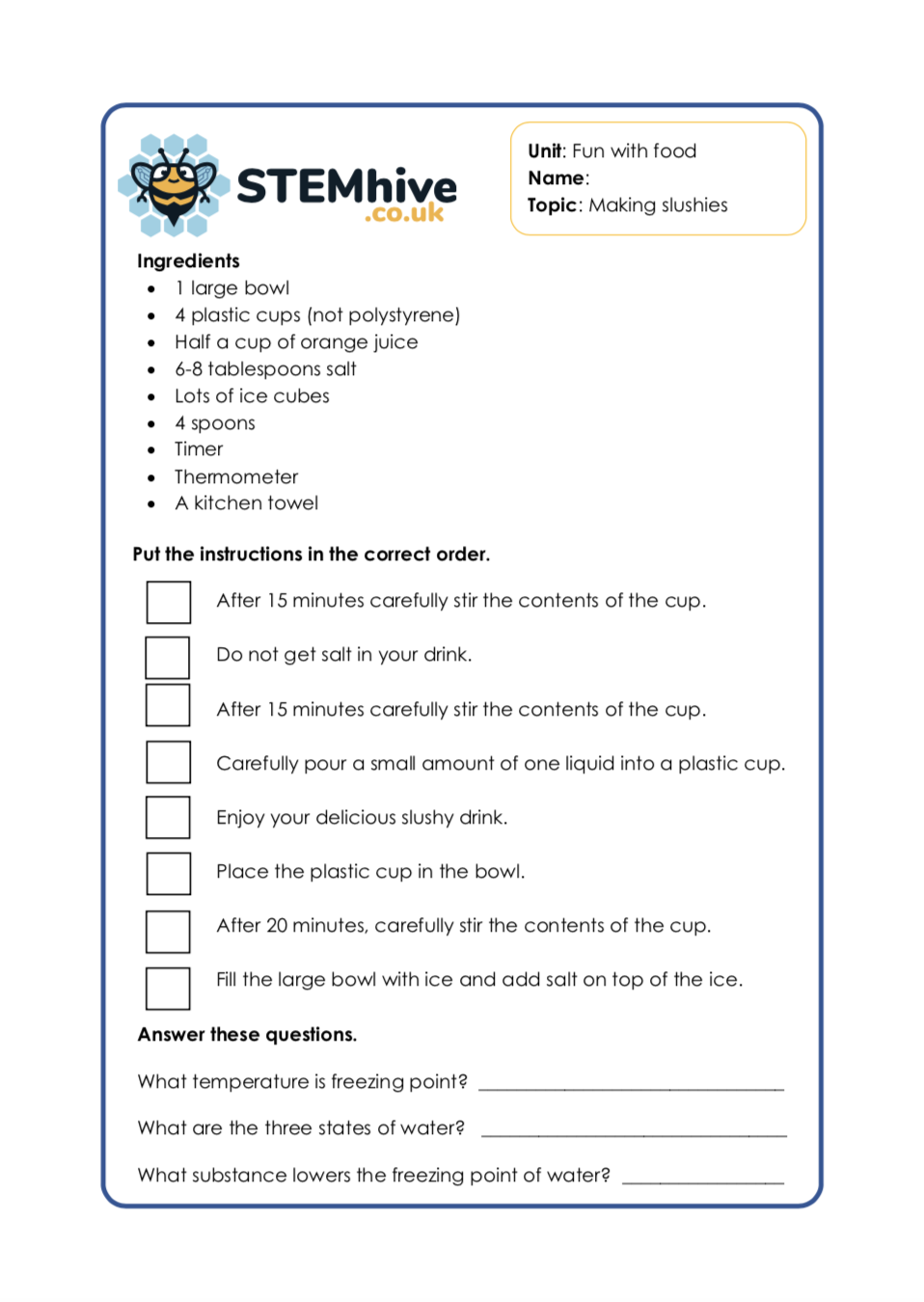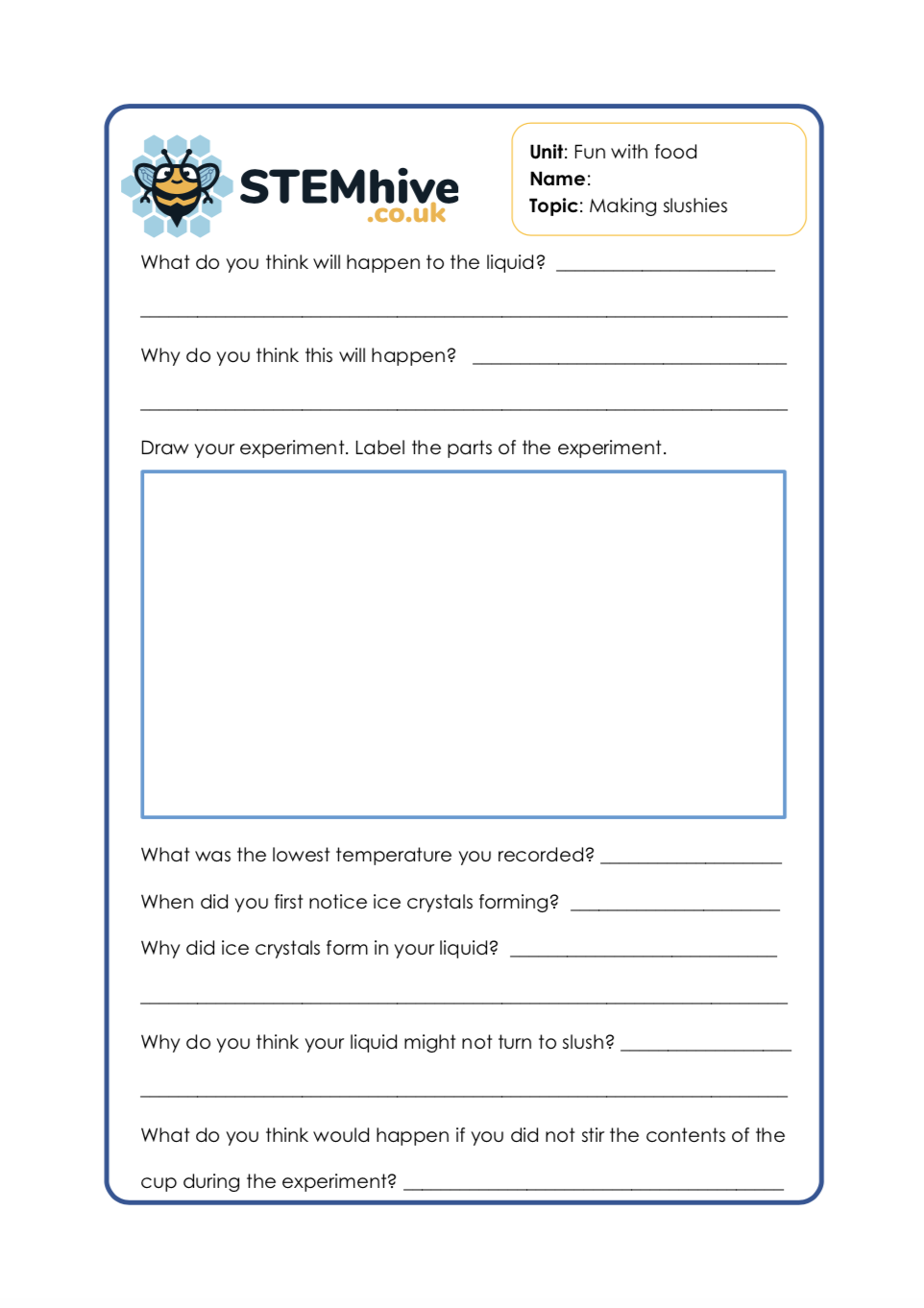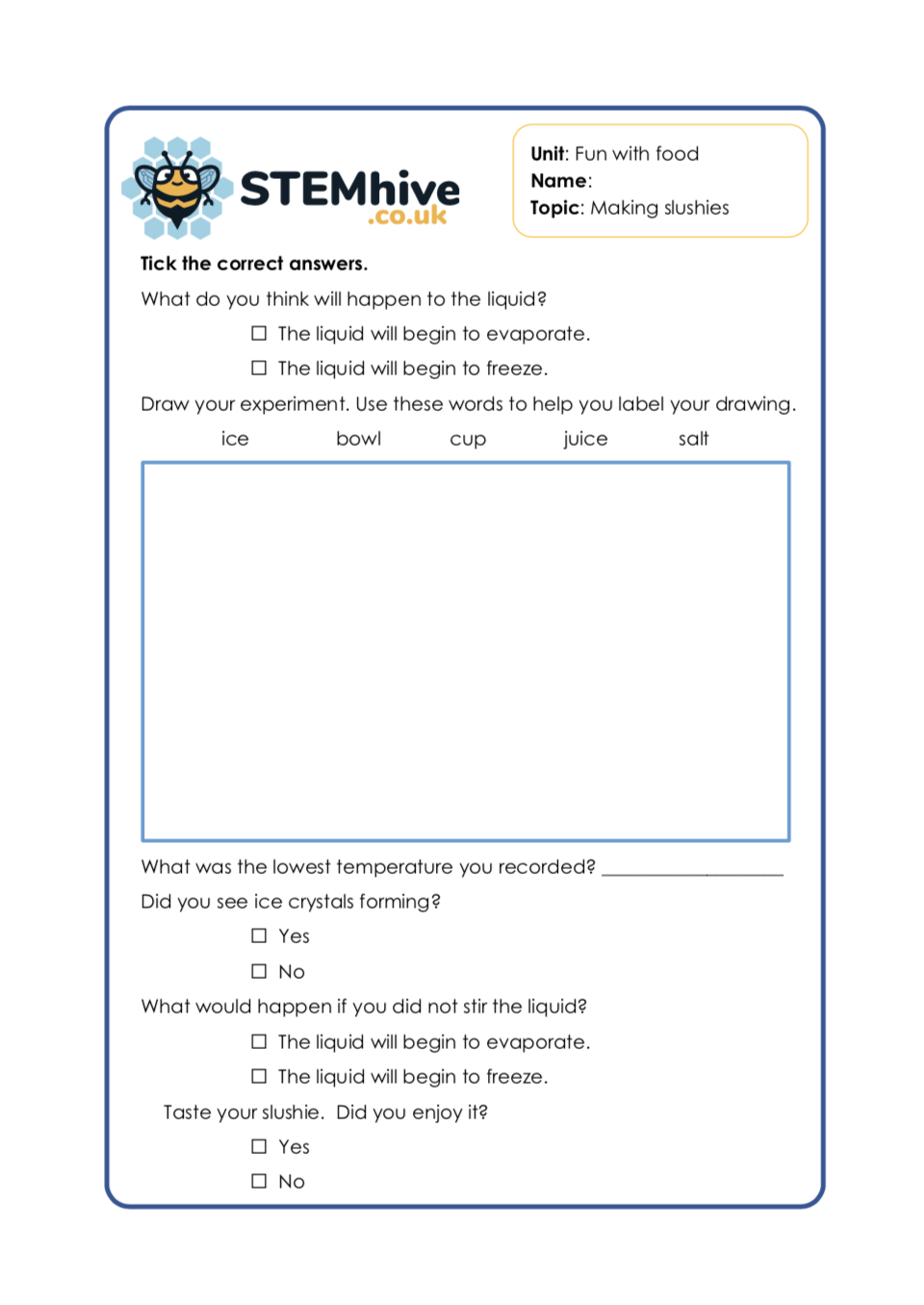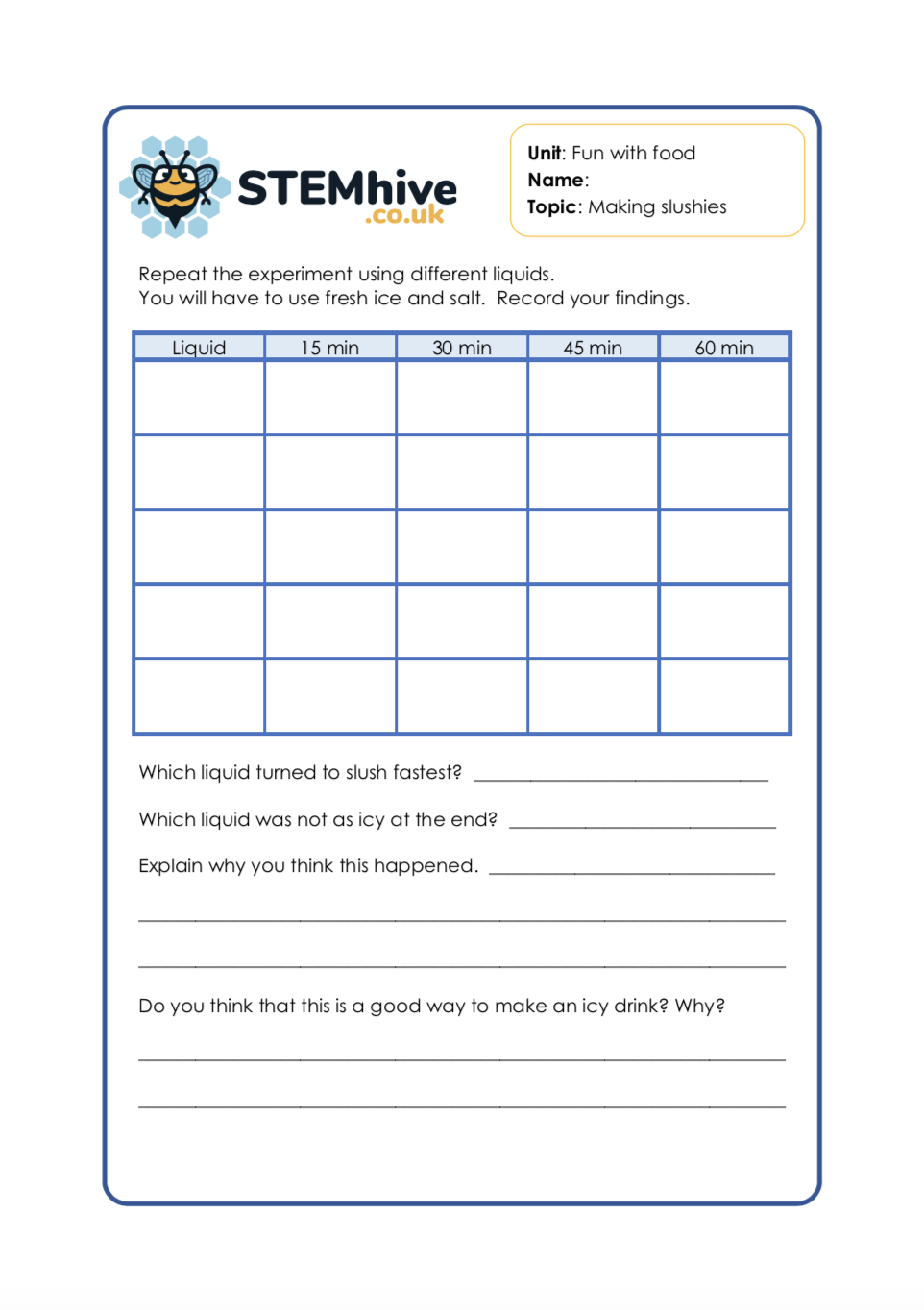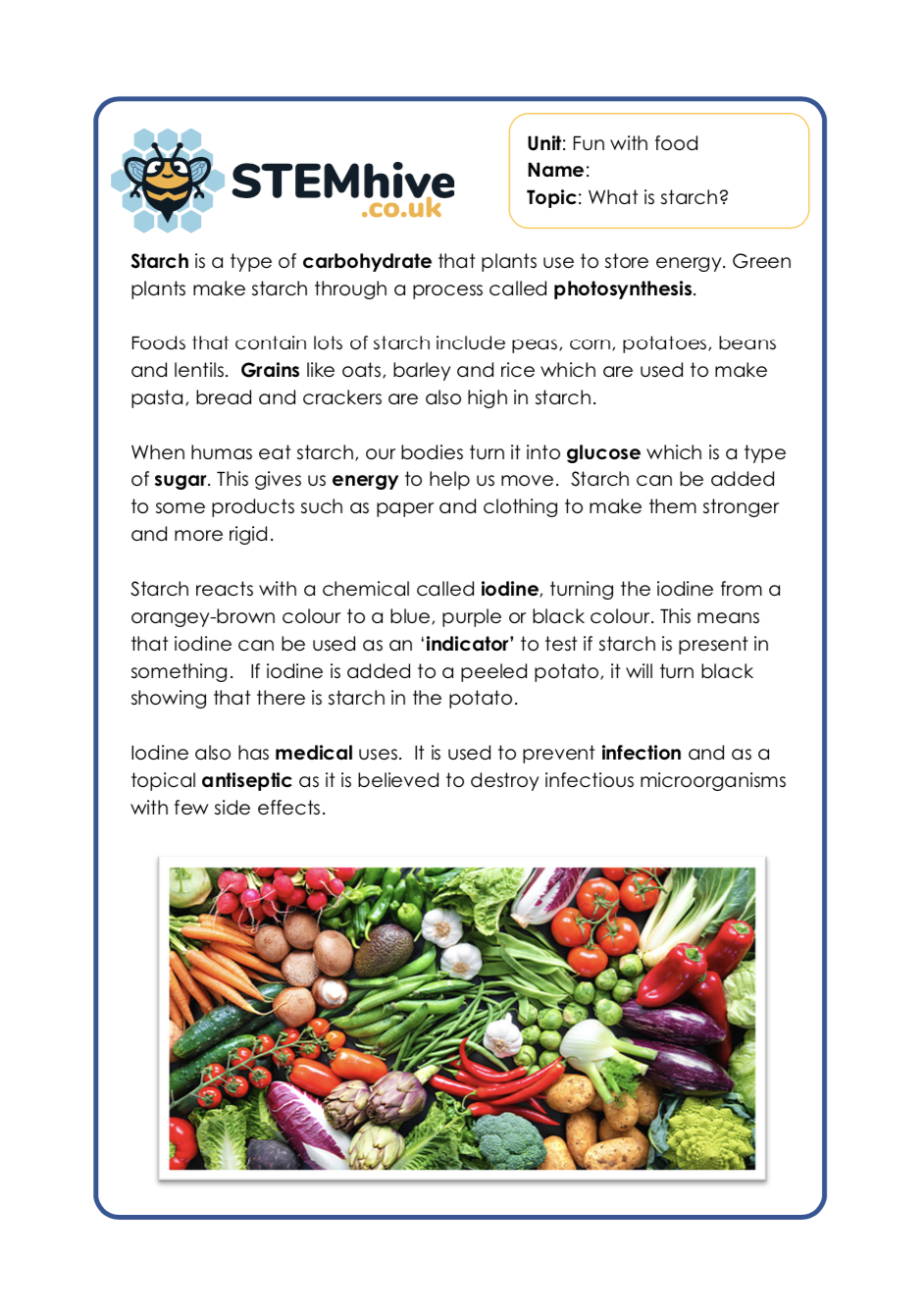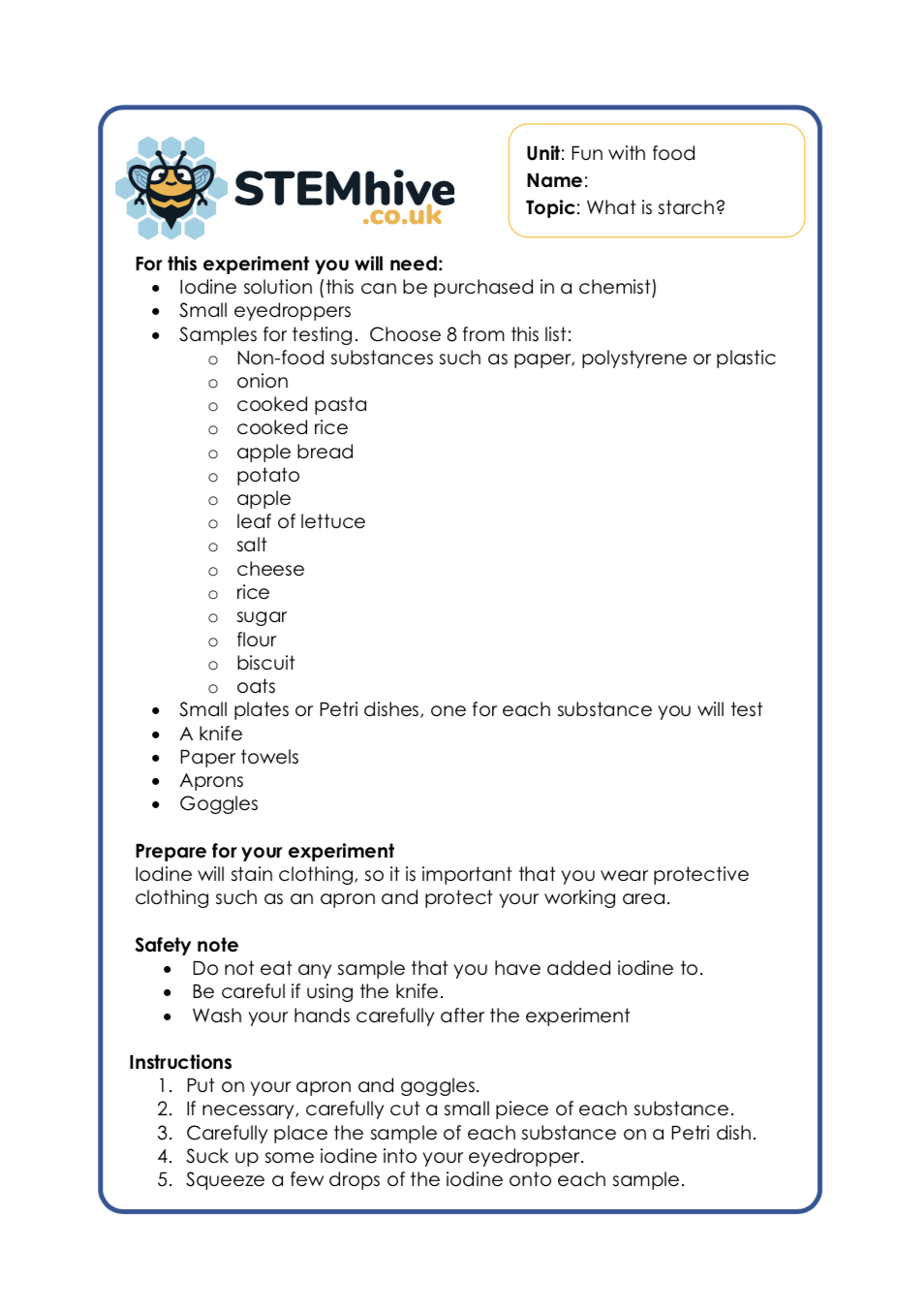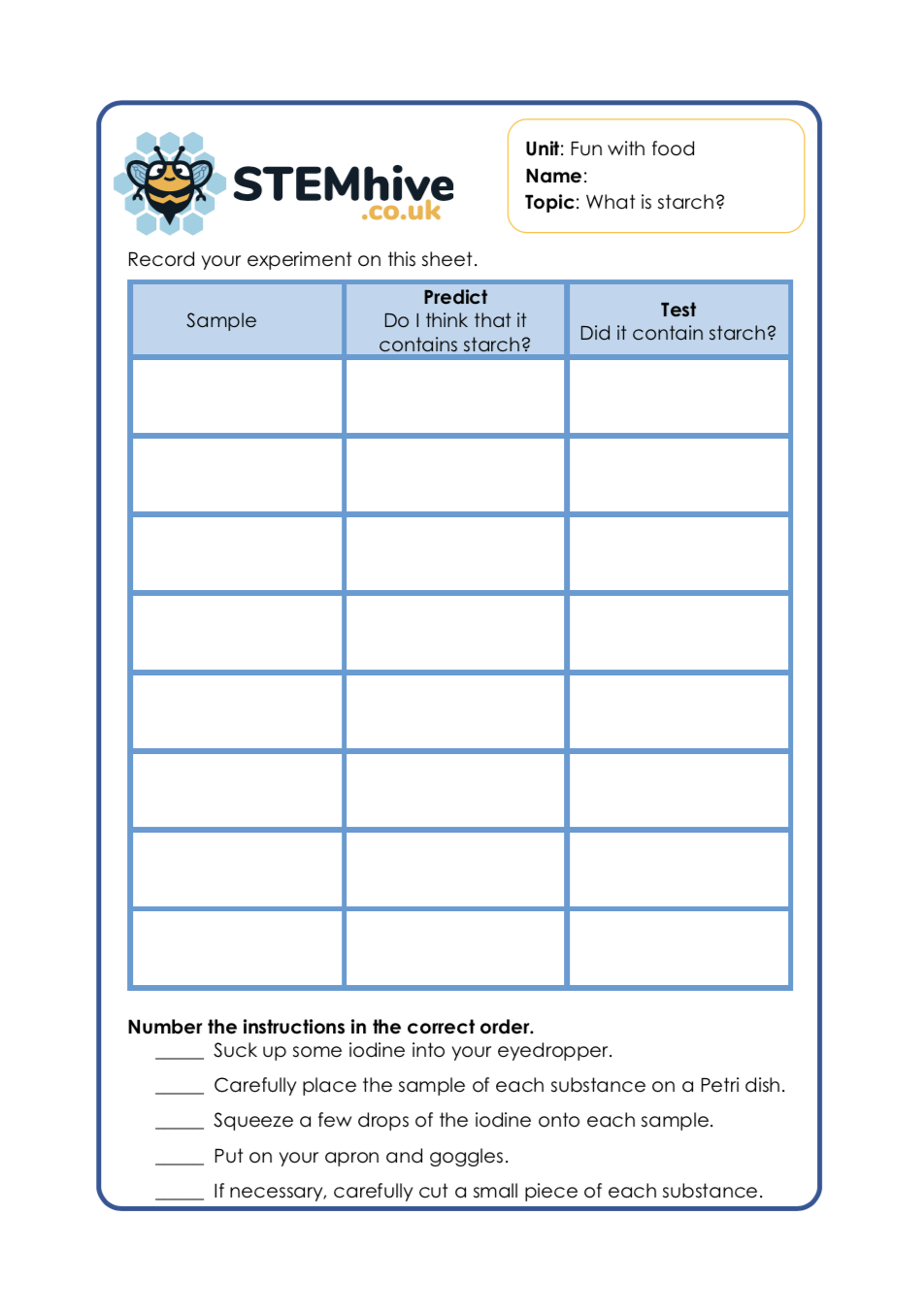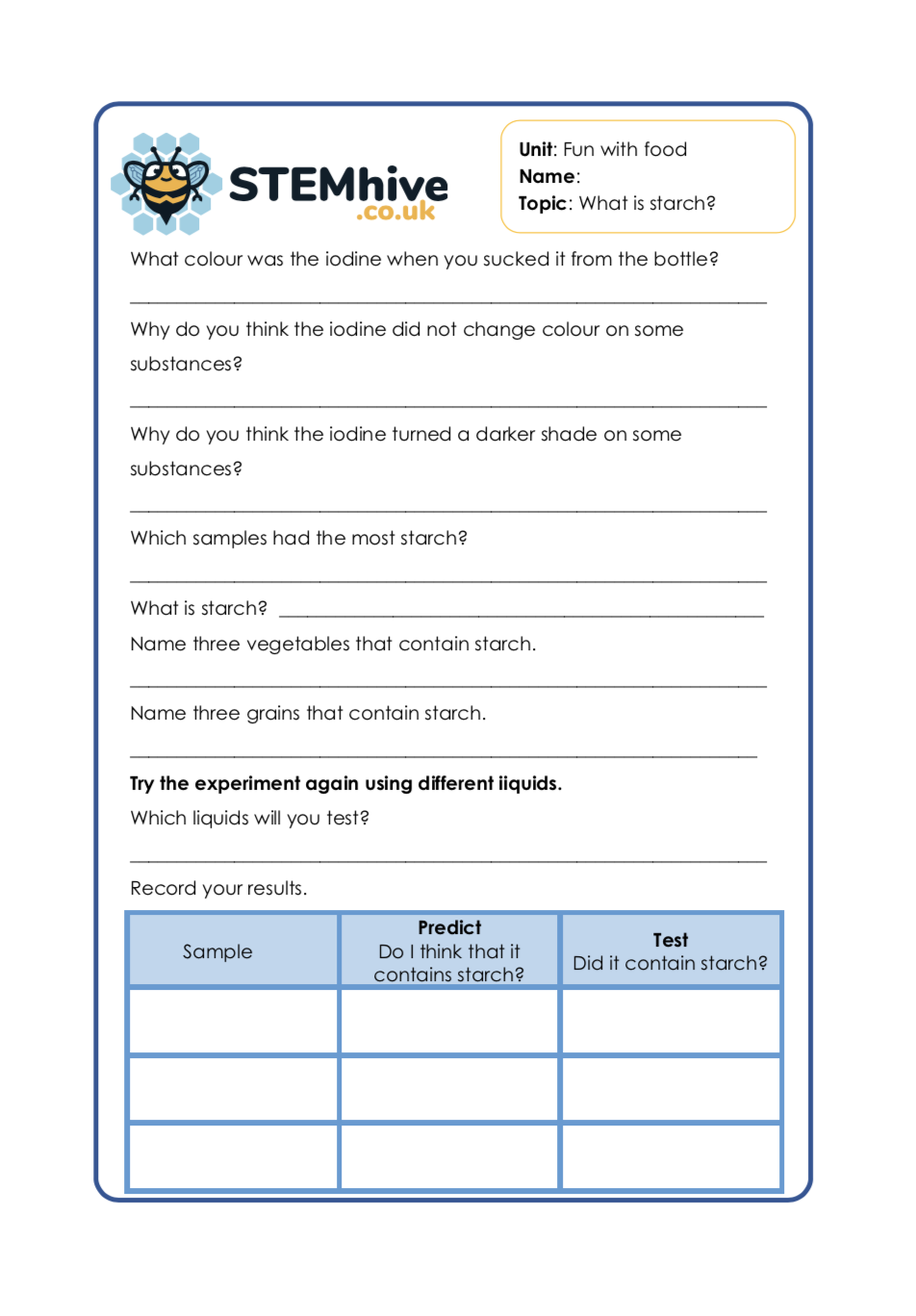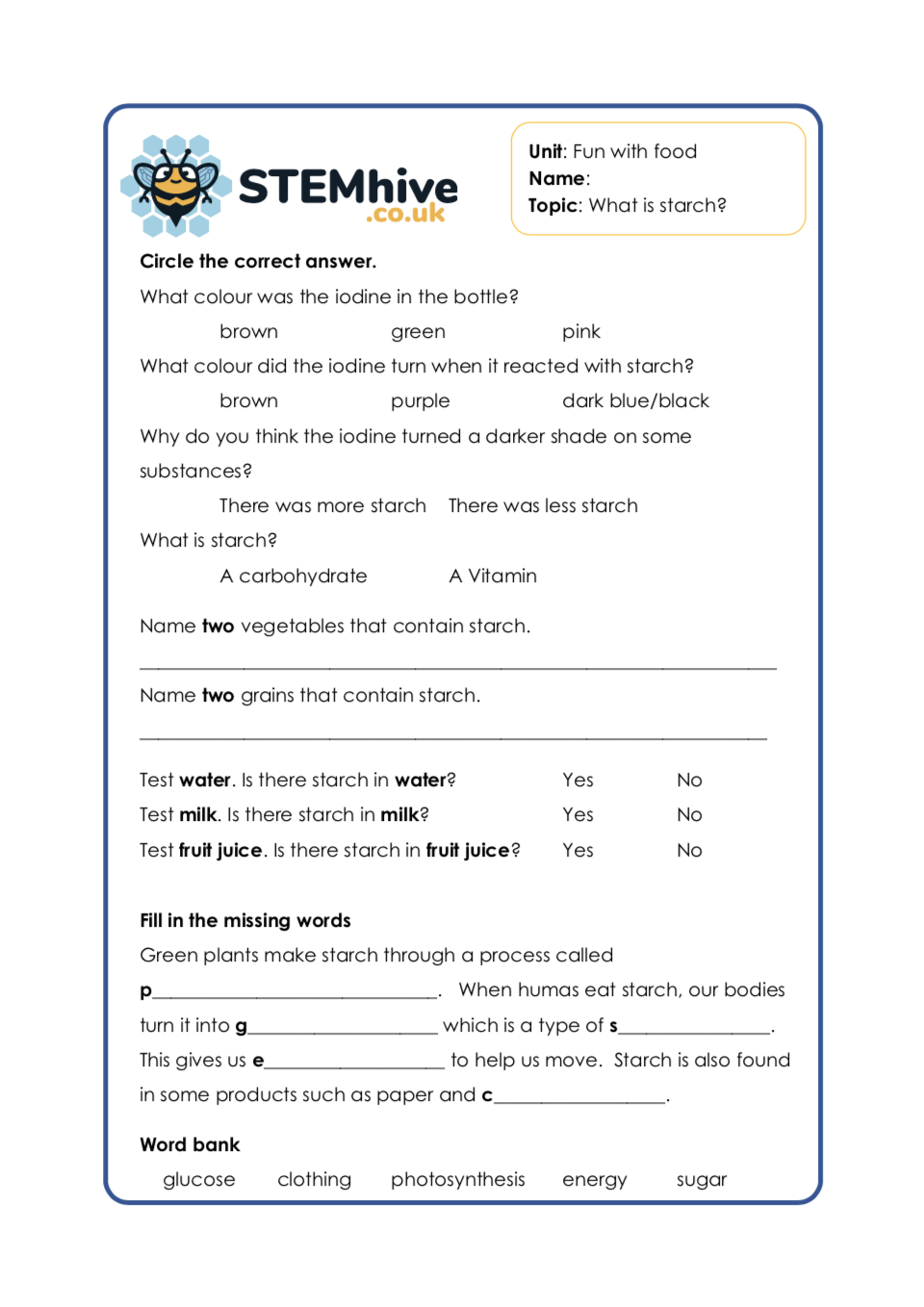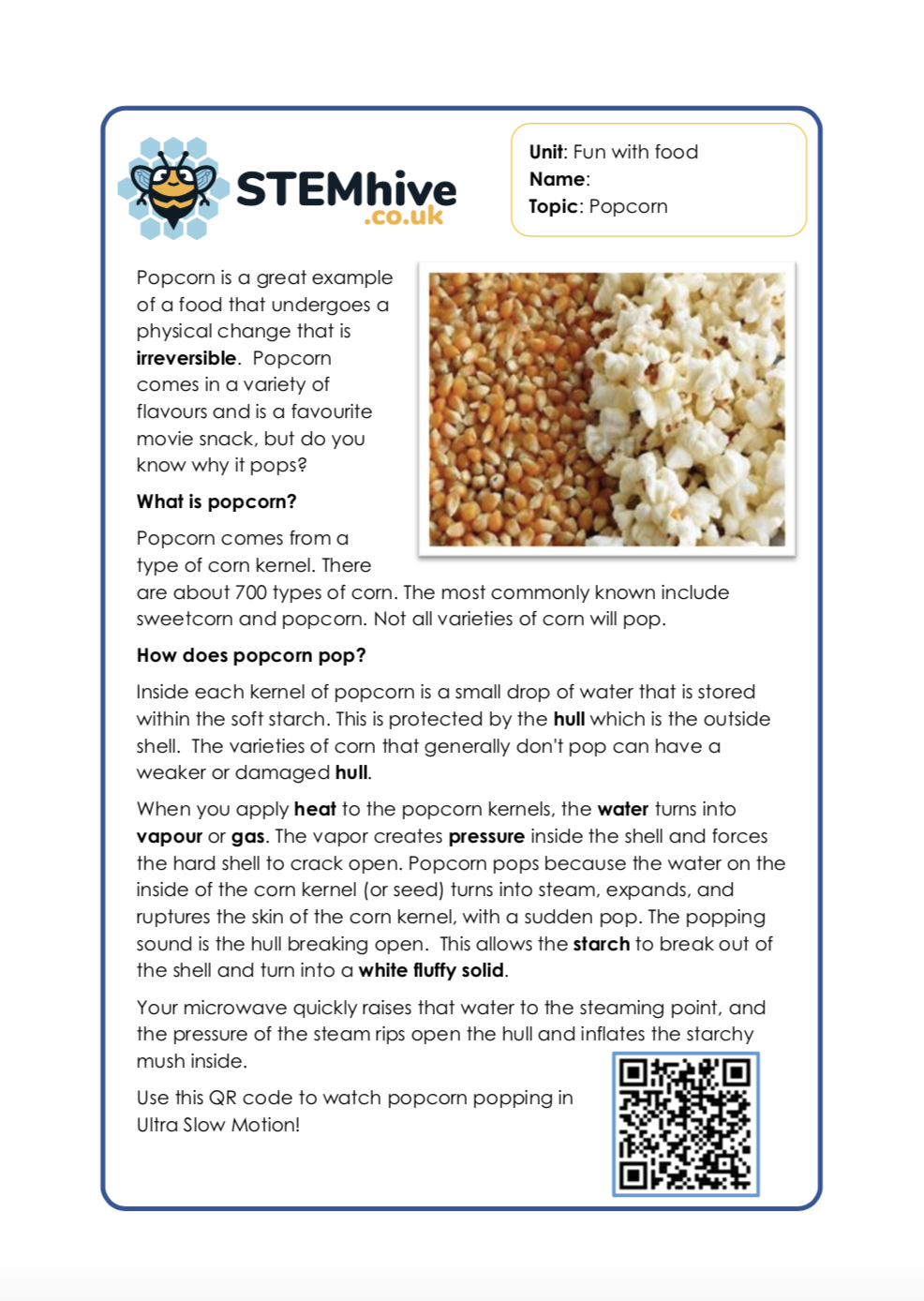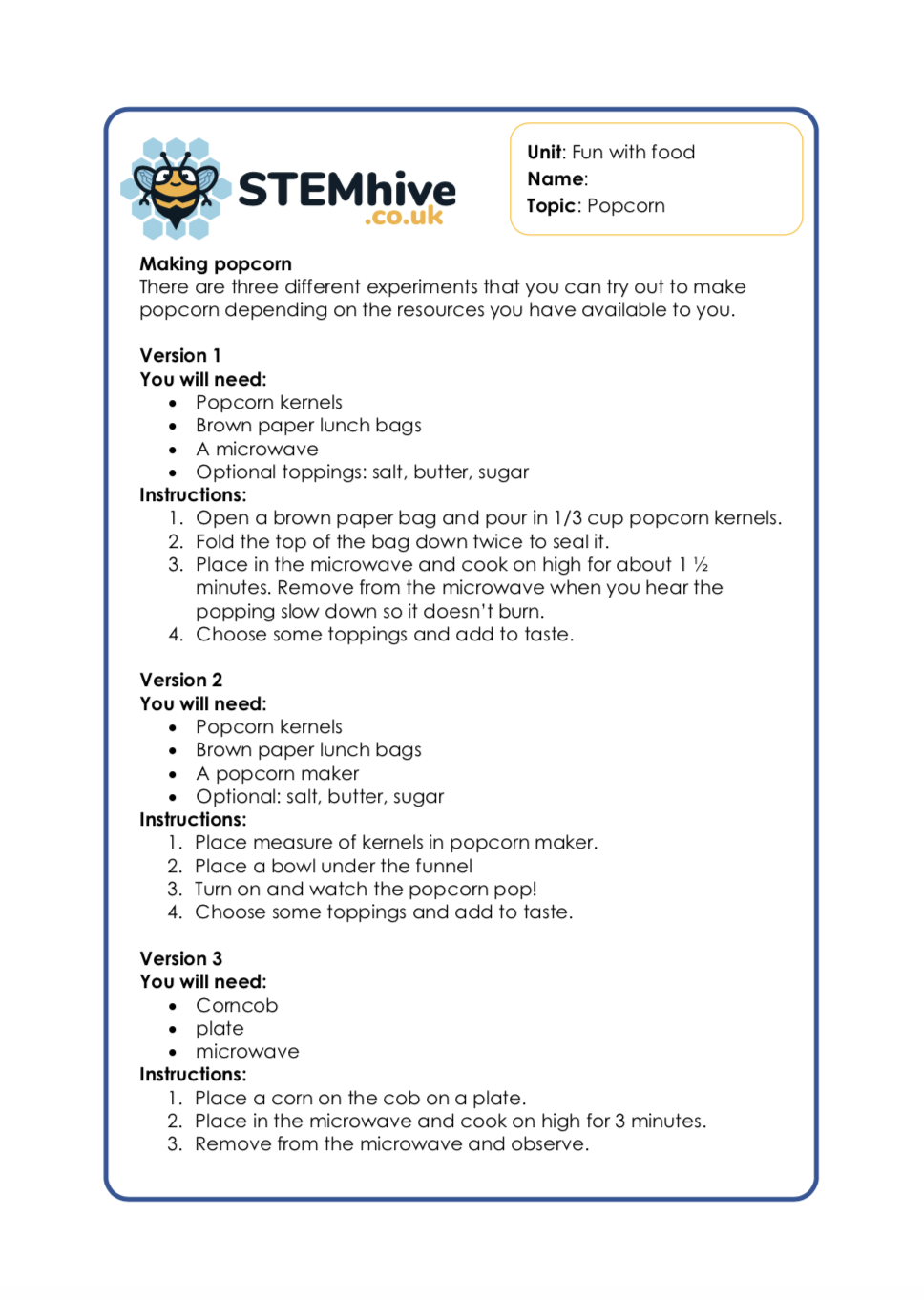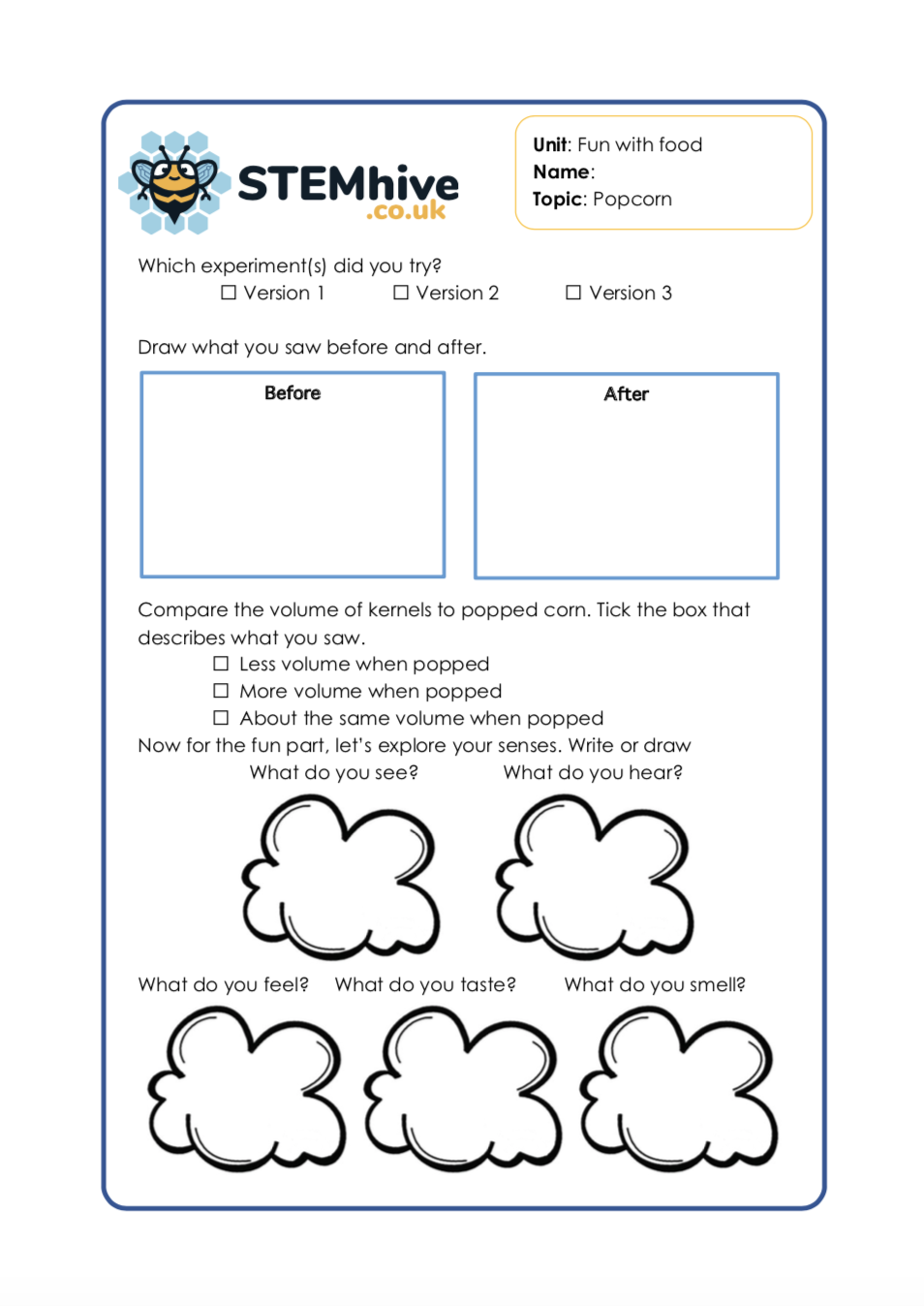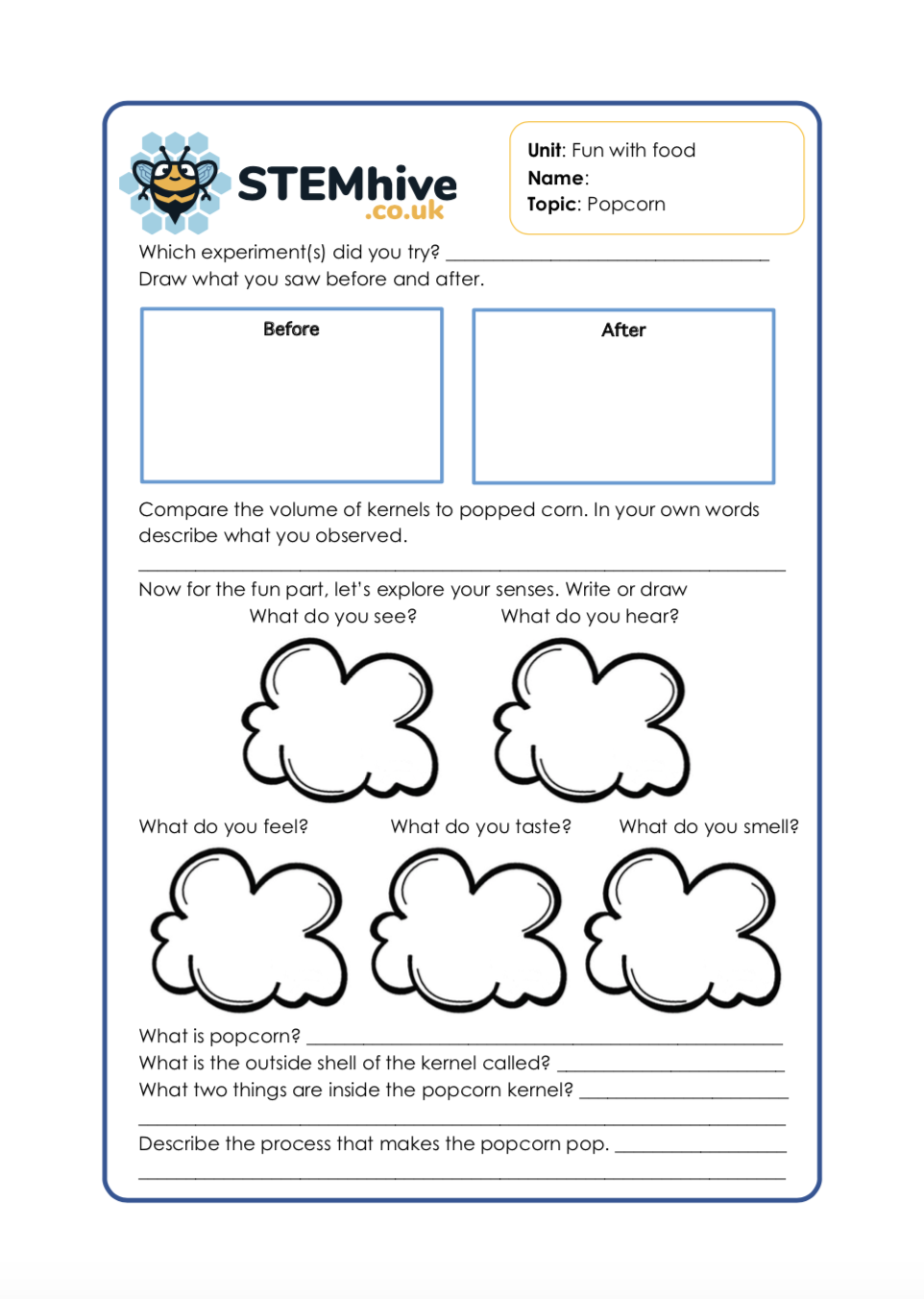Food
Main Focus: Oxidising Apples
In this STEM resource, your KS2 class will look at how apples are affected by oxygen.
Have you ever wondered why apples brown when they have been cut open? The inside of an apple is usually fresh and free from brown spots because the skin of the apple protects it from oxygen in the air.
In the experiment, your class will see how different liquid affects the oxidisation of apples.
Your class will use their predictions and observations, to determine what conclusions can be made about the liquids used in this experiment.
Main Focus: Bouncy Eggs
In this activity, your class will learn all about eggs and answer questions based on what has be read, complete an experiment to attempt to make a jelly egg by removing the entire eggshell using liquids, follow instructions, make observations, record results and learn some AMAZING vocabulary along the way…
Can you drop an egg without breaking it?
The shell of an egg is hard and protects the contents of the egg. Even though it is hard it is also fragile and breaks easily when dropped.
Main Focus: Mint Leaves
In this science resource aimed at LKS2 classes, your children are going to follow the instructions to make mint flavoured chocolate leaves. After they have created the leaves, they will answer the questions to check their understanding and sequence the instructions of their experiment.
Mint is a herb that is used to give
sweet treats a delicious taste and
a sweet smelling breath! There
are many different varieties of
mint including: banana mint
(which actually does taste of
bananas!) chocolate mint,
strawberry mint, buddleia mint,
water mint, peppermint and spearmint are the most commonly known, as they are used to flavour chewing gum and bubble gum.
Main Focus: Coke and Mentos - Reactions
Food can produce some fun reactions. In this STEM resource, your Year 3 / Year 4 class will create a reaction between Coke and Mentos.
The Science – How does it work?
A fizzy drink, or carbonated beverage, is packed full of dissolved carbon dioxide gas which forms bonds with water. While in the bottle, the gas is kept in solution by the bottle’s pressurised conditions. The surface of a Mentos mint is full of little dimples or ‘nucleation sites’ which allow tiny bubbles to form. When Mentos are dropped into diet cola, the rough surface allows the bonds between the carbon dioxide gas and the water to break more easily and faster, helping to create carbon dioxide bubbles and the eruption.
One of the most well-known reactions is the Mentos and diet cola eruption. You might think that this is a chemical reaction where a new substance is produced, but it isn’t. It is a physical reaction. This means that all of the pieces of the reaction are there, but that they have been rearranged. It also means that by changing some factors you can cause a larger or smaller physical reaction to take place.
Main Focus: Coke and Mentos - Creating Variables - Lesson 2
In this task, you will experiment by changing a variable in the Mentos and cola experiment. This time you will test the reaction of whole Mentos and crushed Mentos. You may need to work in groups to set up this experiment.
A variable is a factor that can be changed in an experiment. Knowing about variables can help you make scientific predictions and test them. The independent variable in this experiment is the Mentos. In the first test they are whole but in the second they are crushed. The controlled variable is the cola which does not change.
Once your class have complete the experiment, they will reflect on the experiment details by giving predictions, understanding variables, Measure accurately, analyse results, make observations and so much more using our resource page to guide them.
Main Focus: Fizzy Eruptions - Lesson 3
You have already conducted two experiments using cola and Mentos. Now you should consider how you will set up and test your own experiment.
You will have to create hypothesis for your experiment. A hypothesis is an idea about how something might work and can be tested by experiments. It could be an idea that you want to investigate. For example, does temperature affect the eruption height?
Other examples of variables to change could include:
- use different flavours of fizzy drinks
- use different brands of fizzy drinks
- use different mint sweets
- use different types of sweets
- change the temperature of the cola
- use a different material e.g. salt, sand, bicarbonate of soda, baking powder, sugar
Main Focus: Bubbly Honeycomb Experiment
Honeycomb is a crispy, sweet treat that is filled with bubbles. It is the bubbles that give the honeycomb its name because there is no honey in it! But how do those bubbles get inside? The secret is in the heat!
Your LKS2 class will follow our instructions, complete the experiment, draw out their experiment, give explanations and much more.
Main Focus: Making a Slushie - Solid, Liquid and Gas
On a warm day, it is refreshing to drink a cold icy drink! A slushie is a refreshing icy drink that resembles melting snow. It is colder than water but not as solid as ice and you can drink it.
Water can be found as a solid, liquid or gas. The form will change depending on the water’s state. As a liquid, it’s called water. As a solid, it’s called ice and when it evaporates into a vapour it is called a gas. The freezing point of water is 0°C. At this temperature it becomes a solid, which you cannot drink!
This experiment will produce a delicious icy drink using a scientific process called ‘heat transfer’. During the experiment you will see the juice change from a liquid to a solid.
Main Focus: Starchy Foods
Starch is a type of carbohydrate that plants use to store energy. Green plants make starch through a process called photosynthesis.
Foods that contain lots of starch include peas, corn, potatoes, beans and lentils. Grains like oats, barley and rice which are used to make pasta, bread and crackers are also high in starch.
When humas eat starch, our bodies turn it into glucose which is a type of sugar. This gives us energy to help us move. Starch can be added to some products such as paper and clothing to make them stronger and more rigid.
Starch reacts with a chemical called iodine, turning the iodine from a orangey-brown colour to a blue, purple or black colour. This means that iodine can be used as an ‘indicator’ to test if starch is present in something. This is what your Year 3 / Year 4 class will do in this experiment.
Main Focus: Popcorn
Popcorn is a great example of a food that undergoes a physical change that is irreversible. Popcorn comes in a variety of flavours and is a favourite movie snack, but do you know why it pops?
In this science lesson, your class will explore the science behind why popcorn pops and learn more of the finer details.
Unlock Resource
